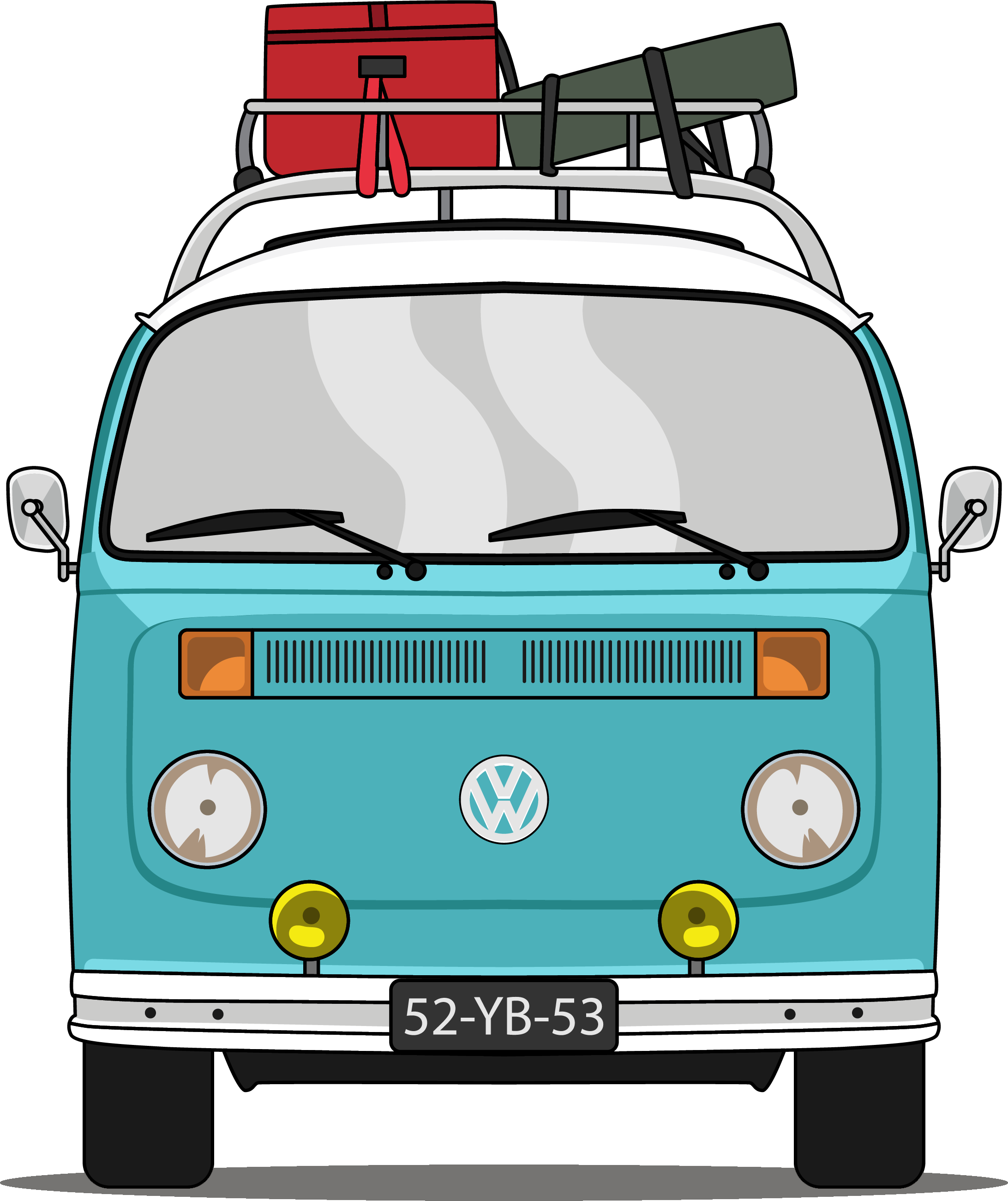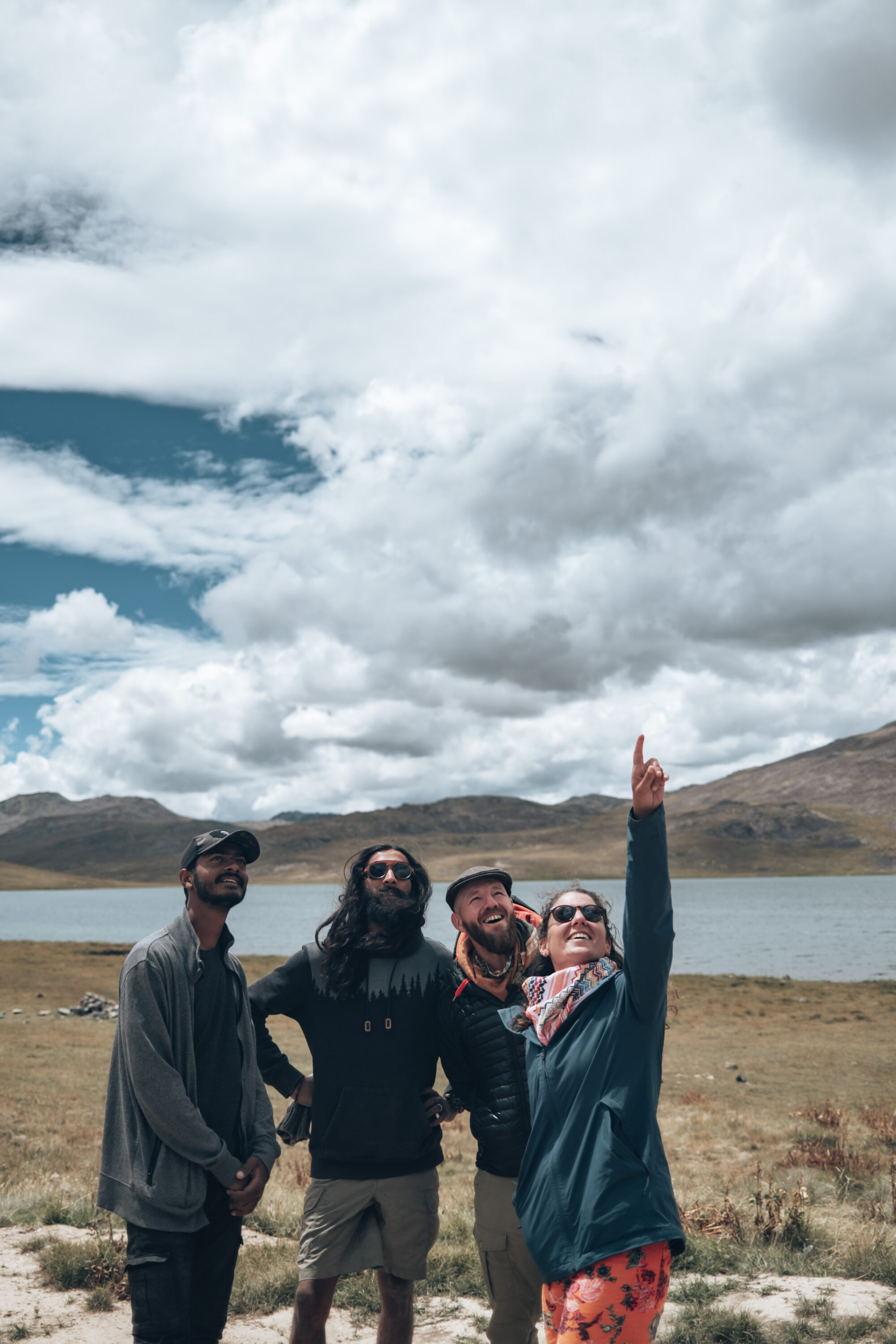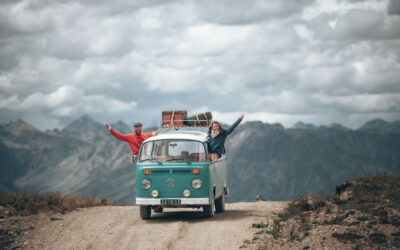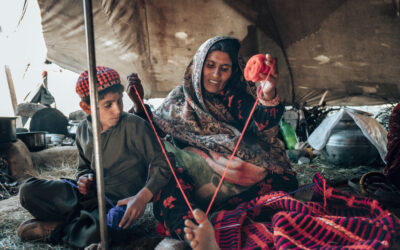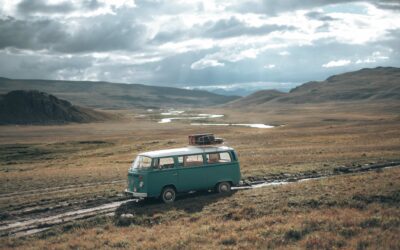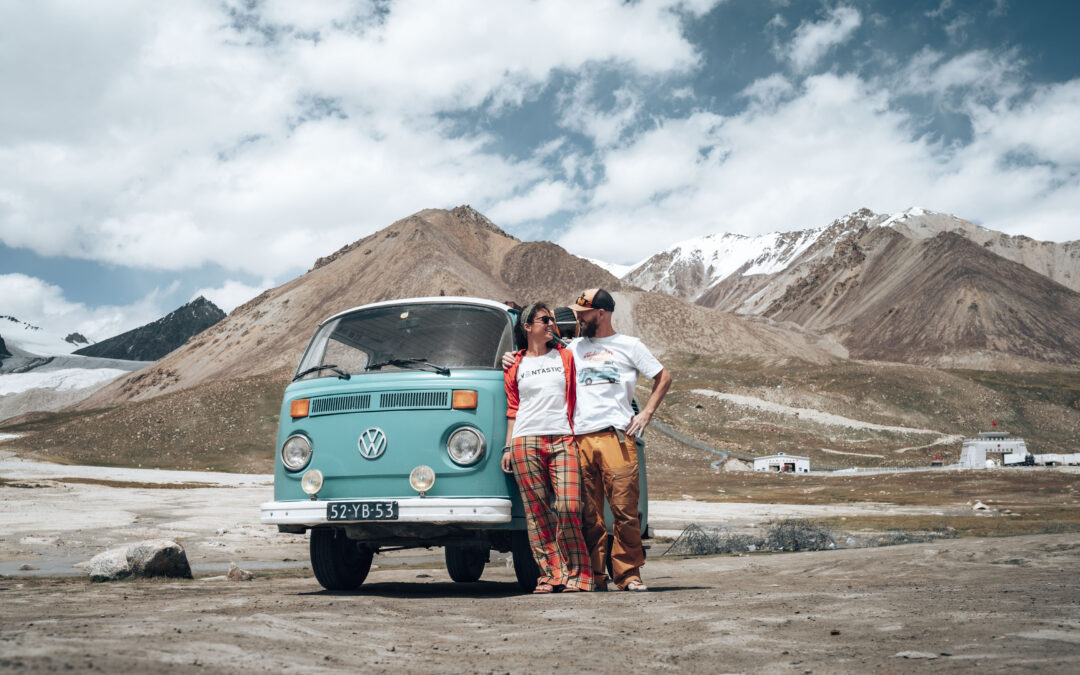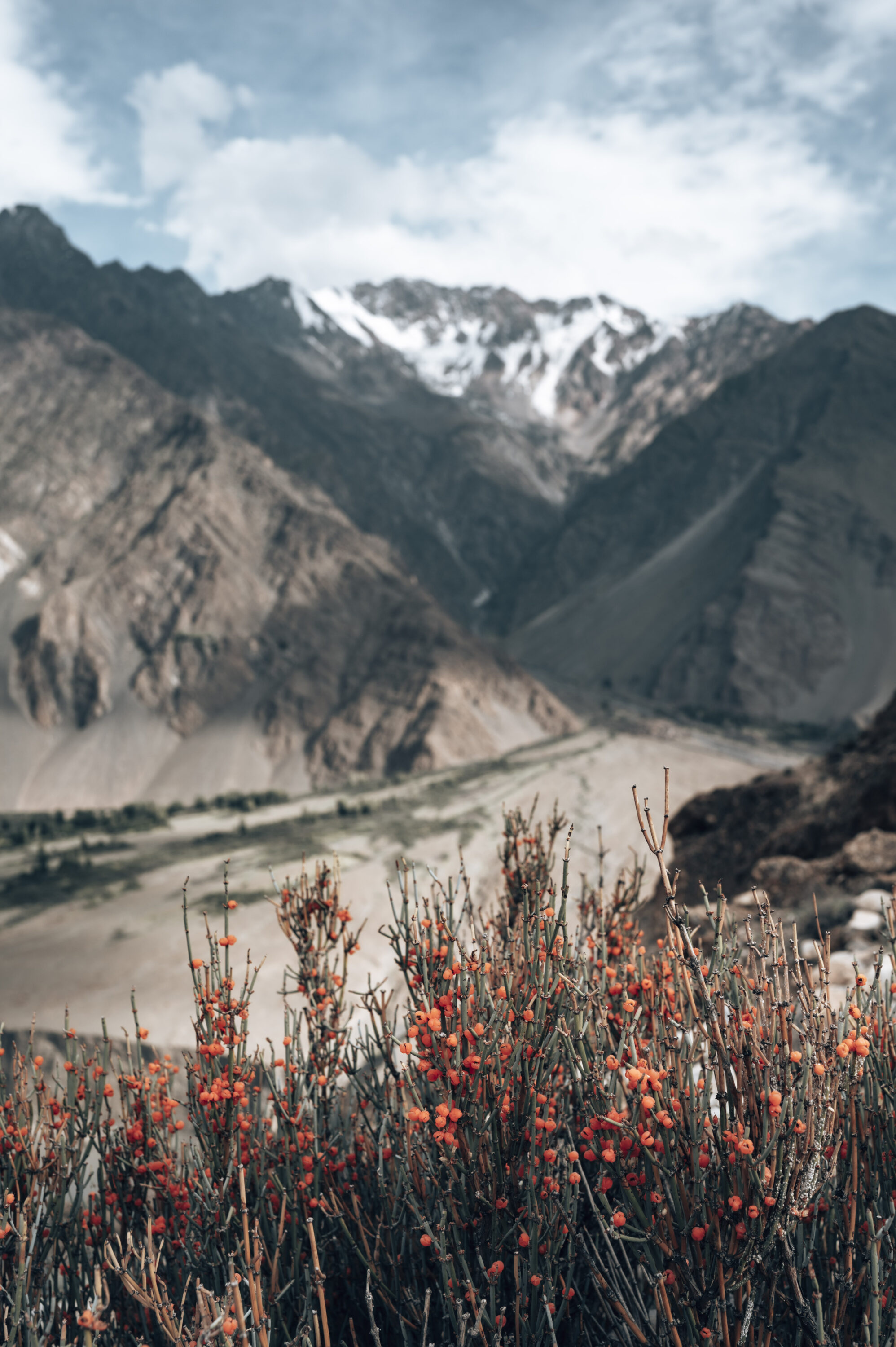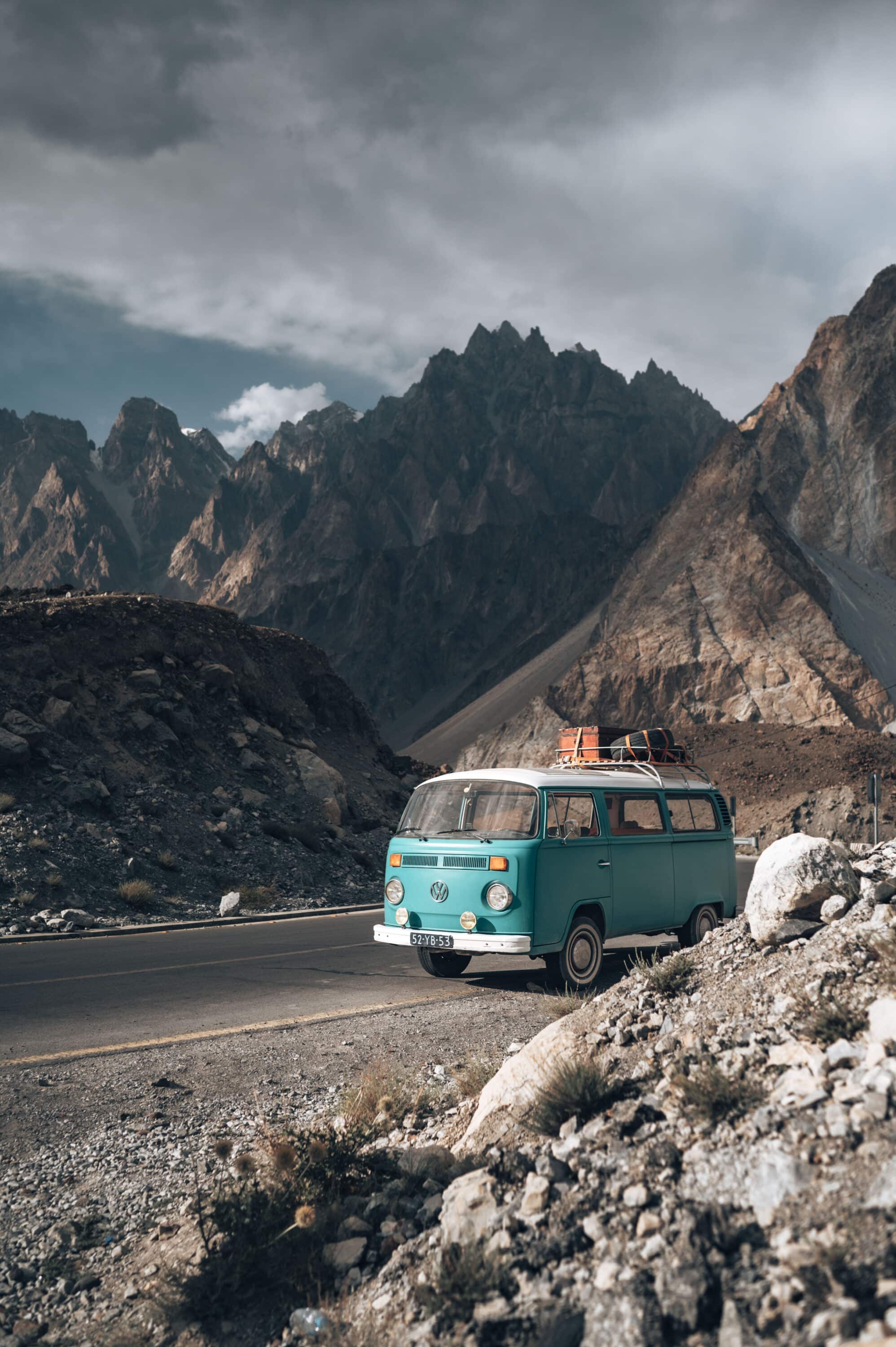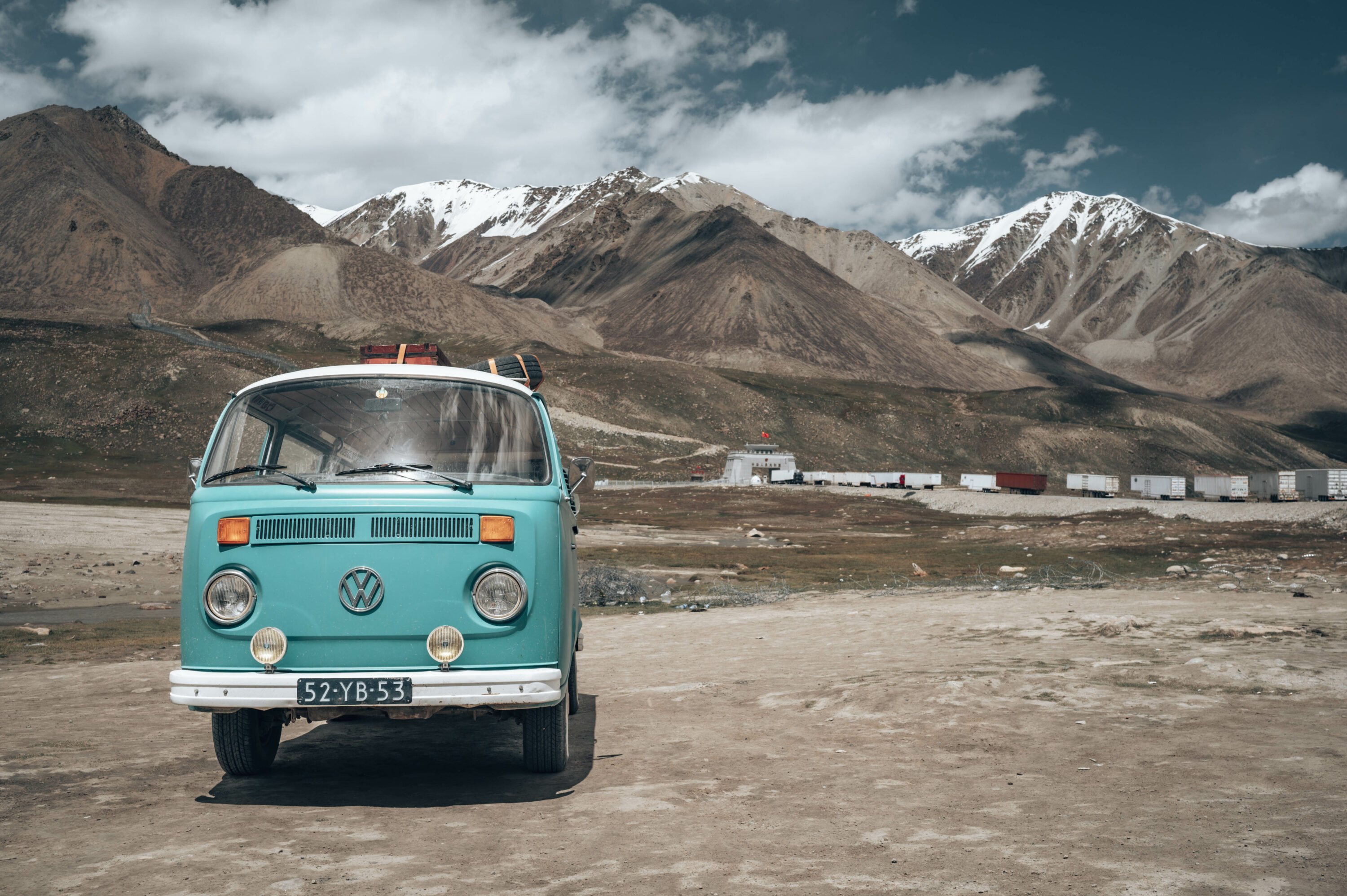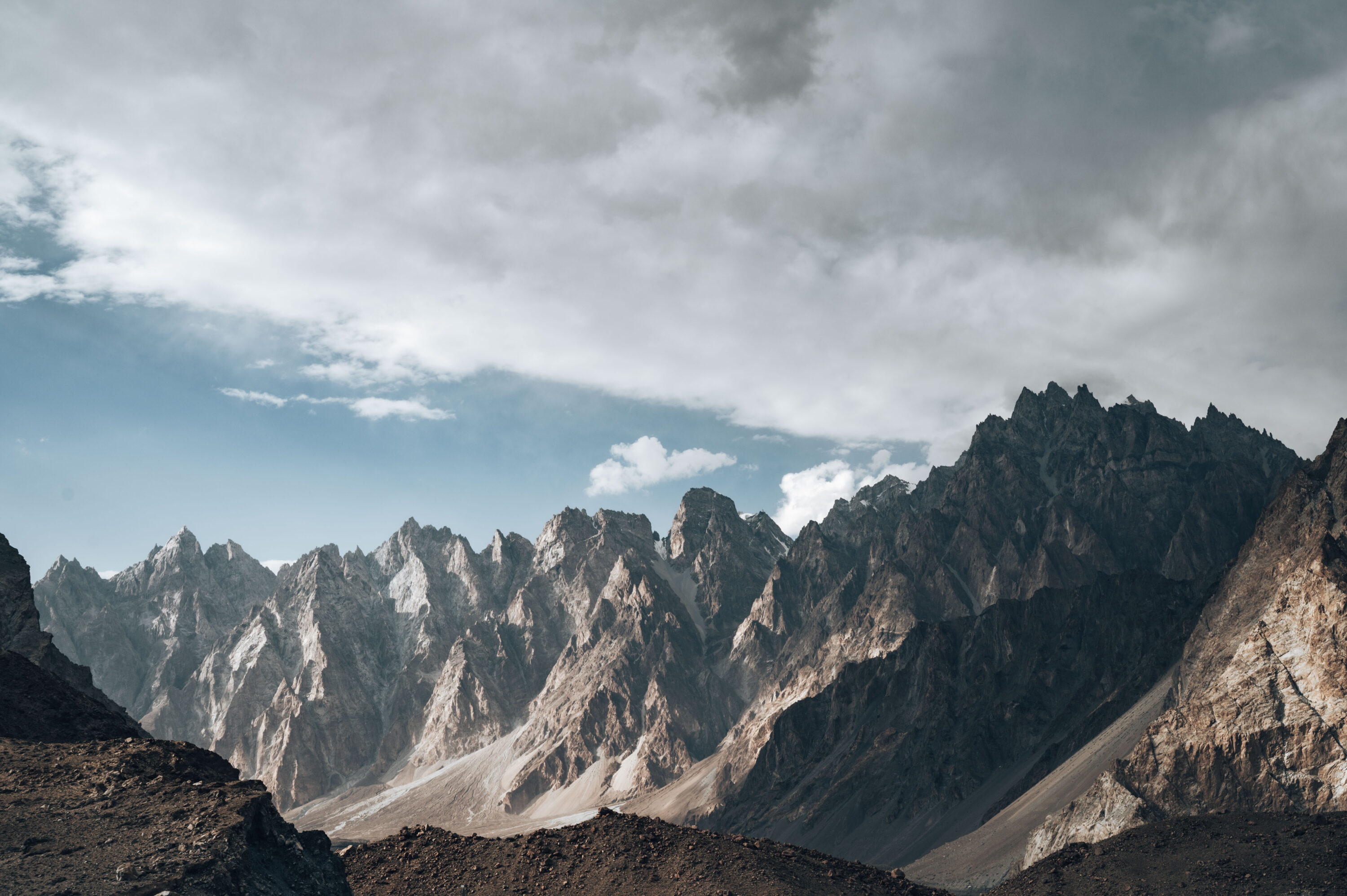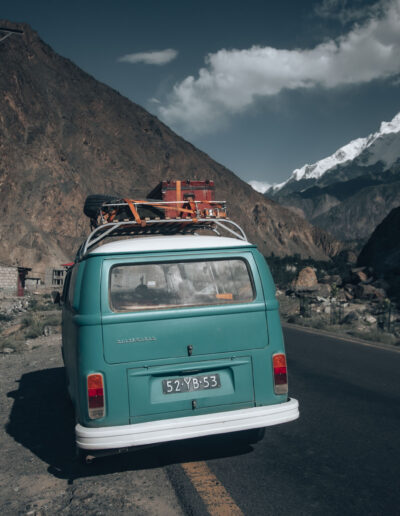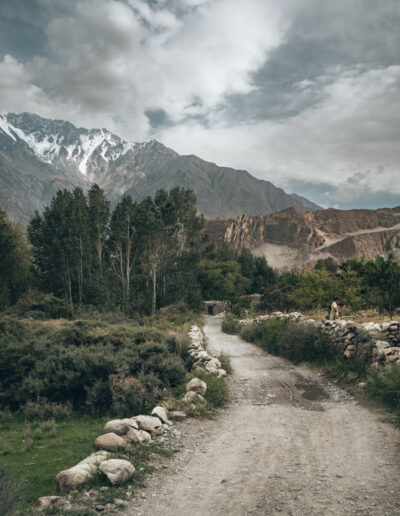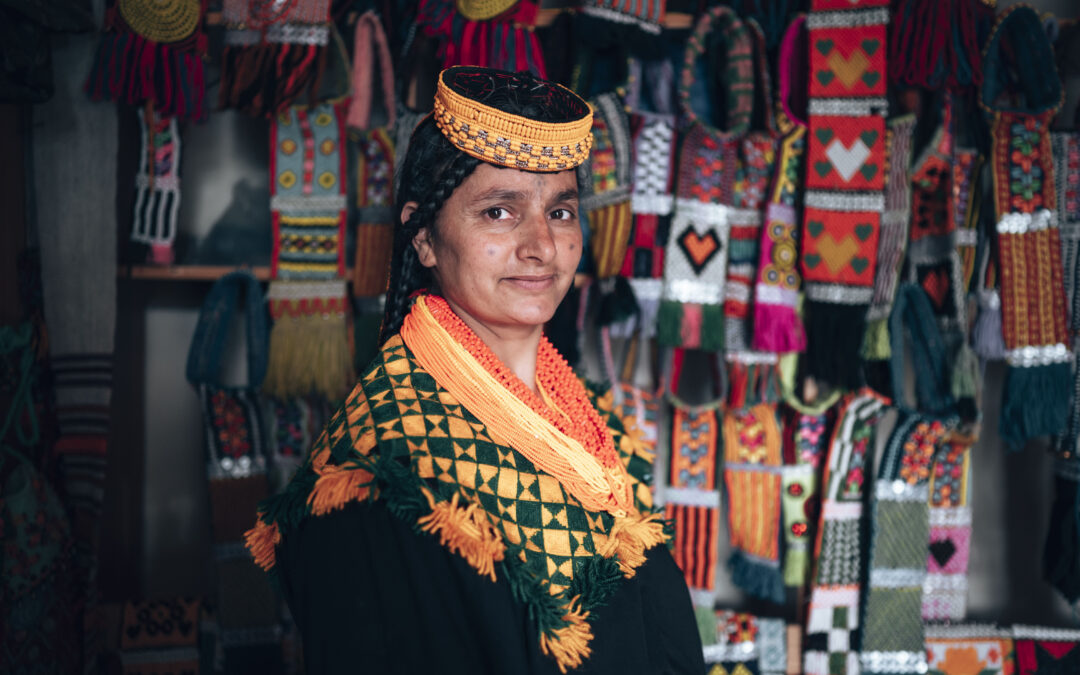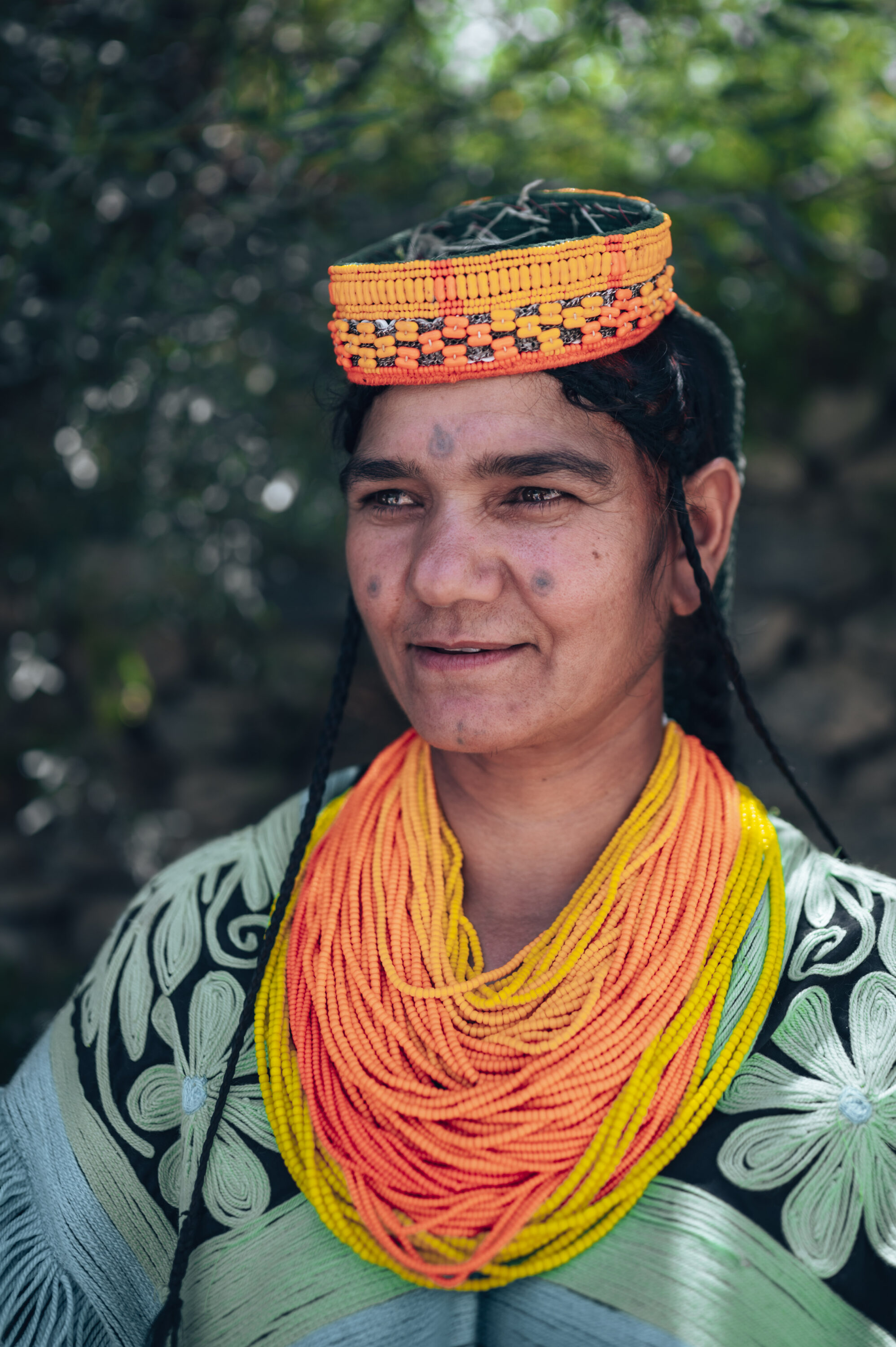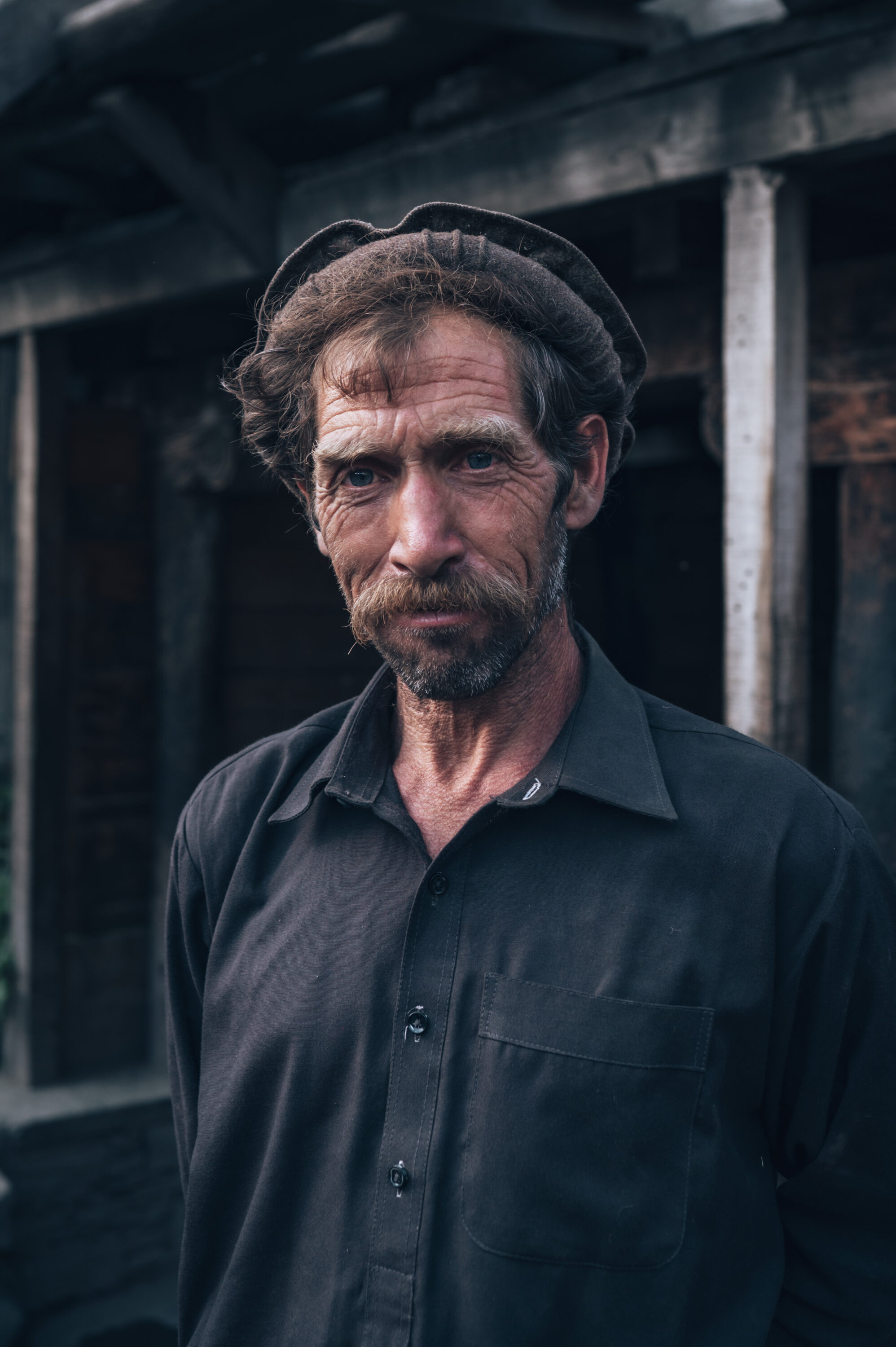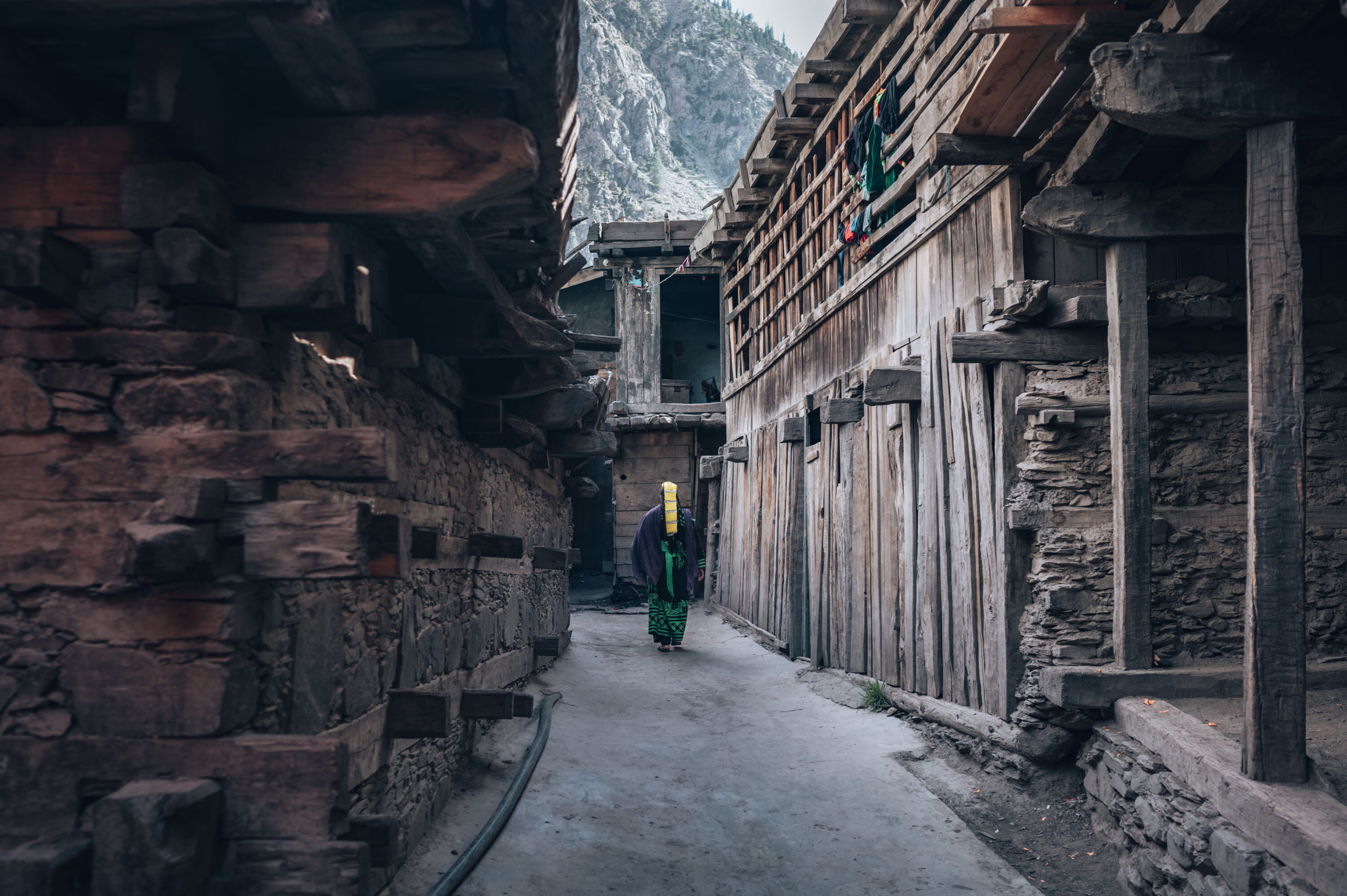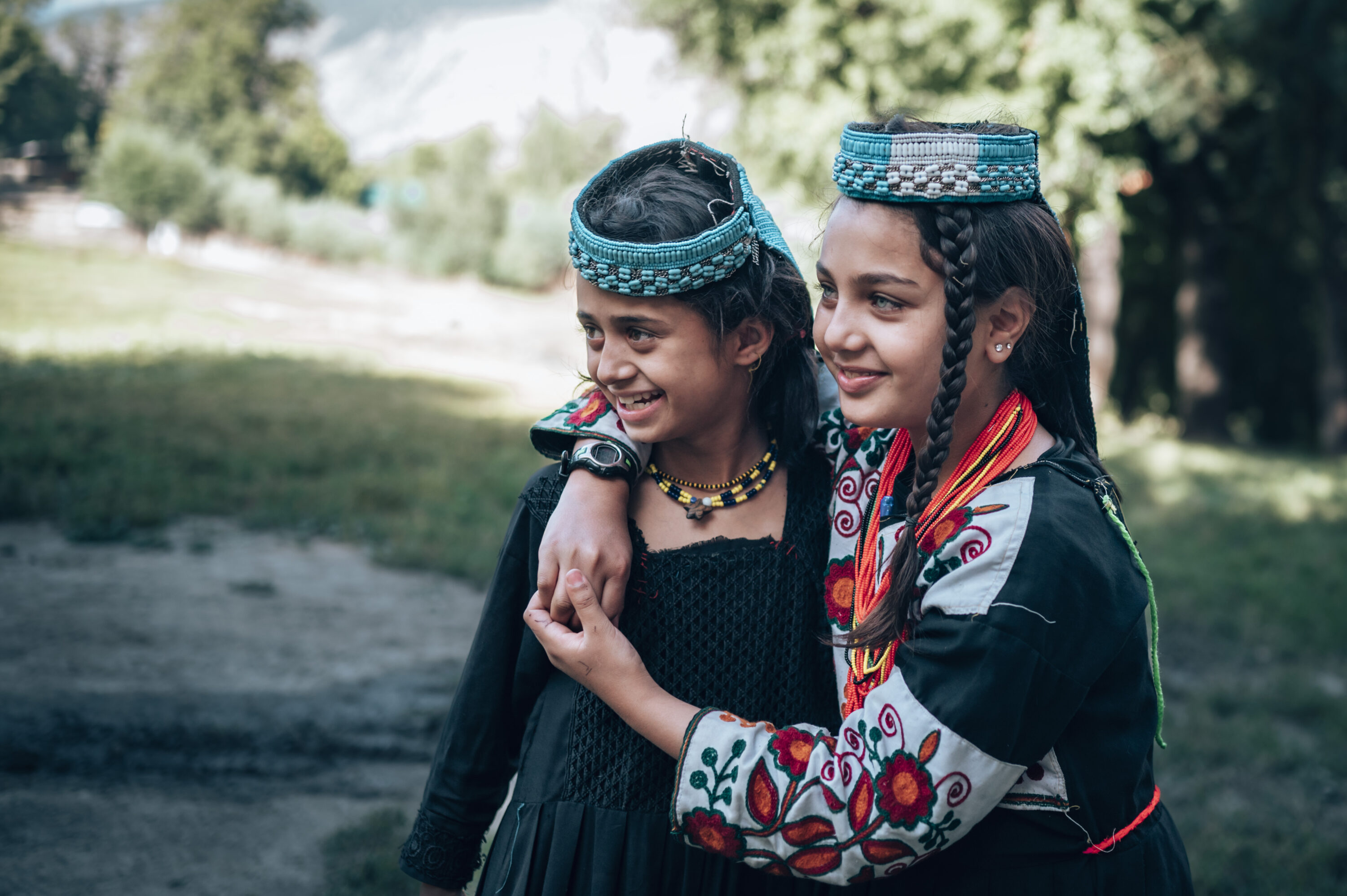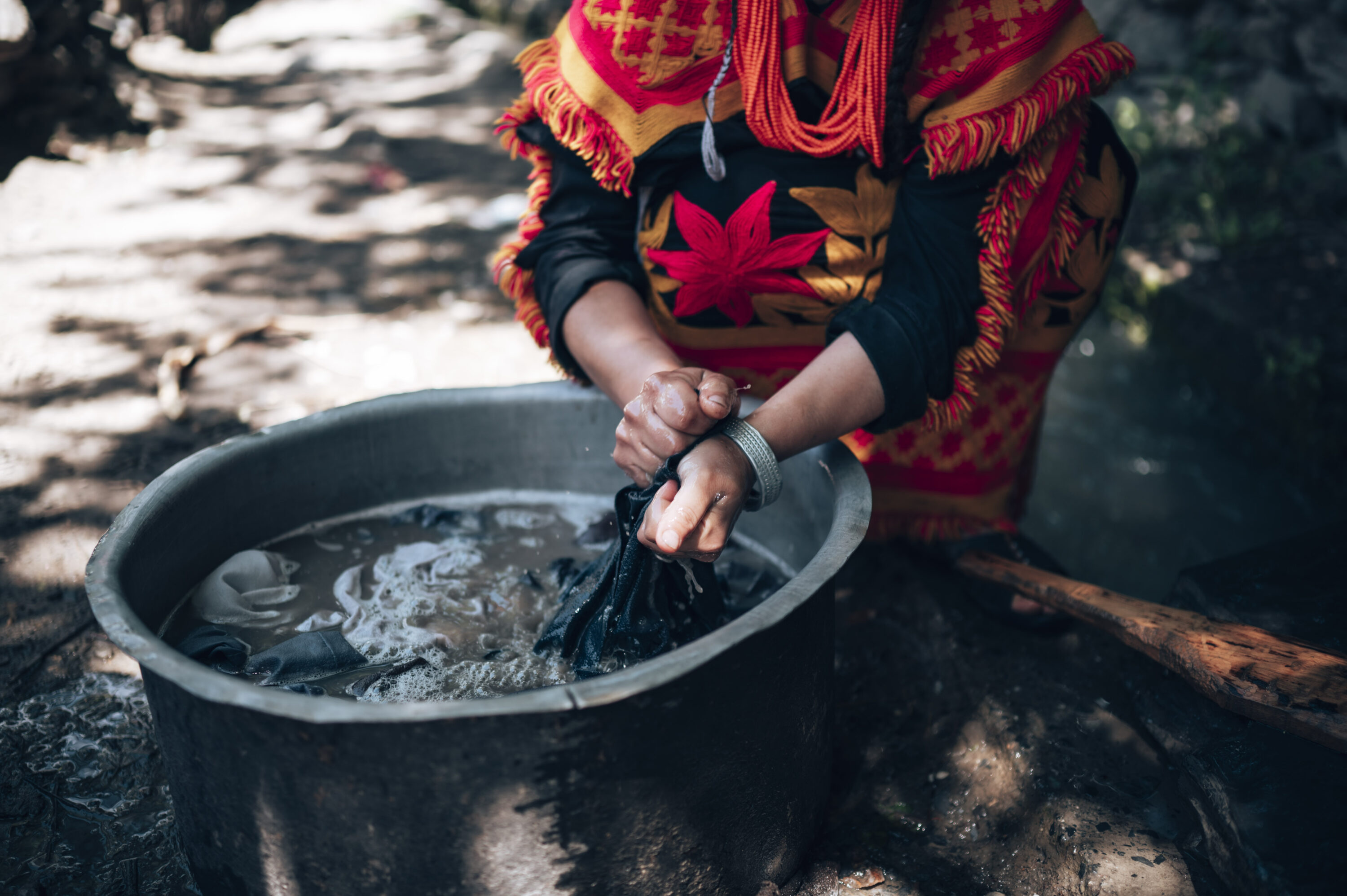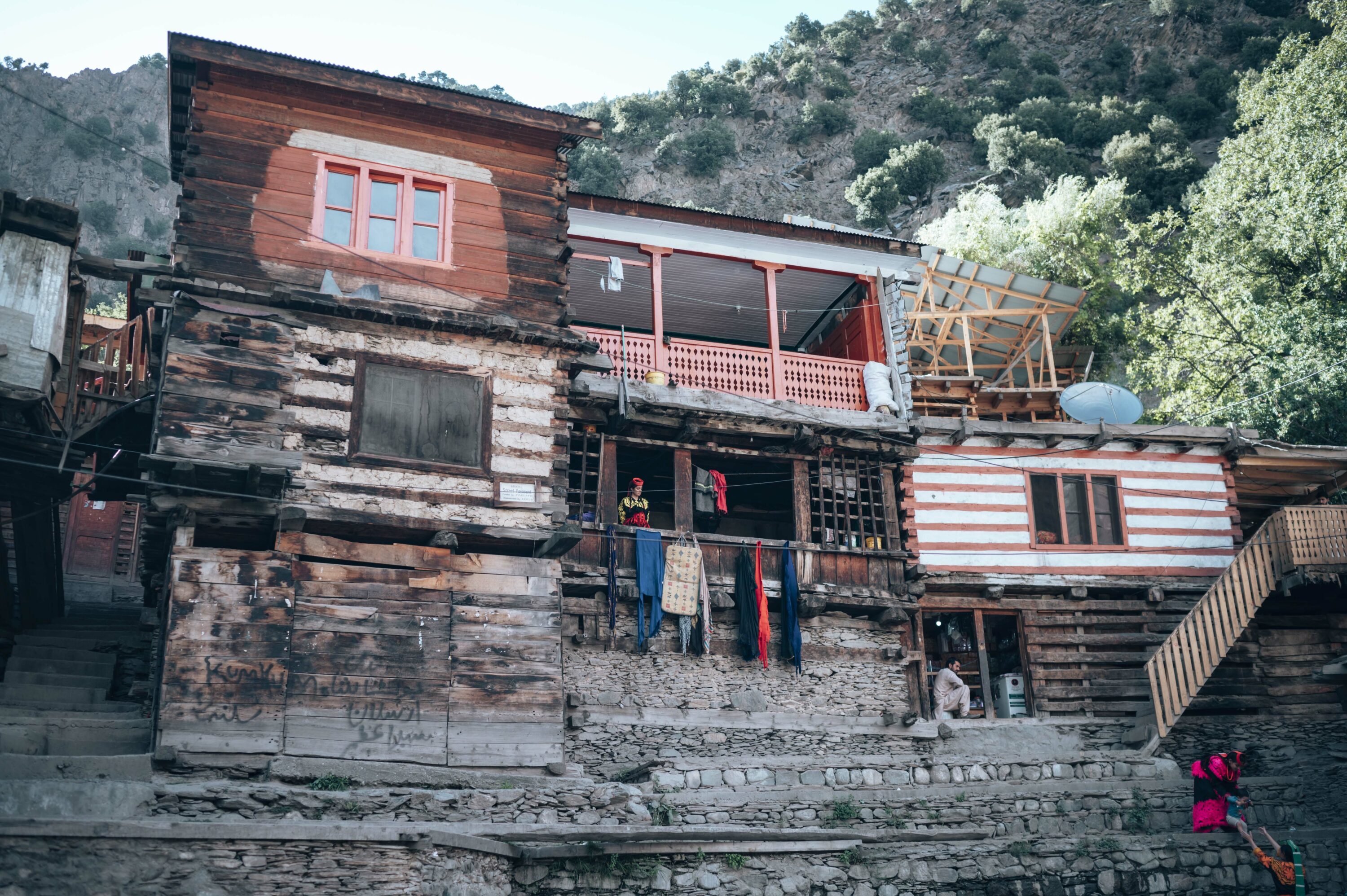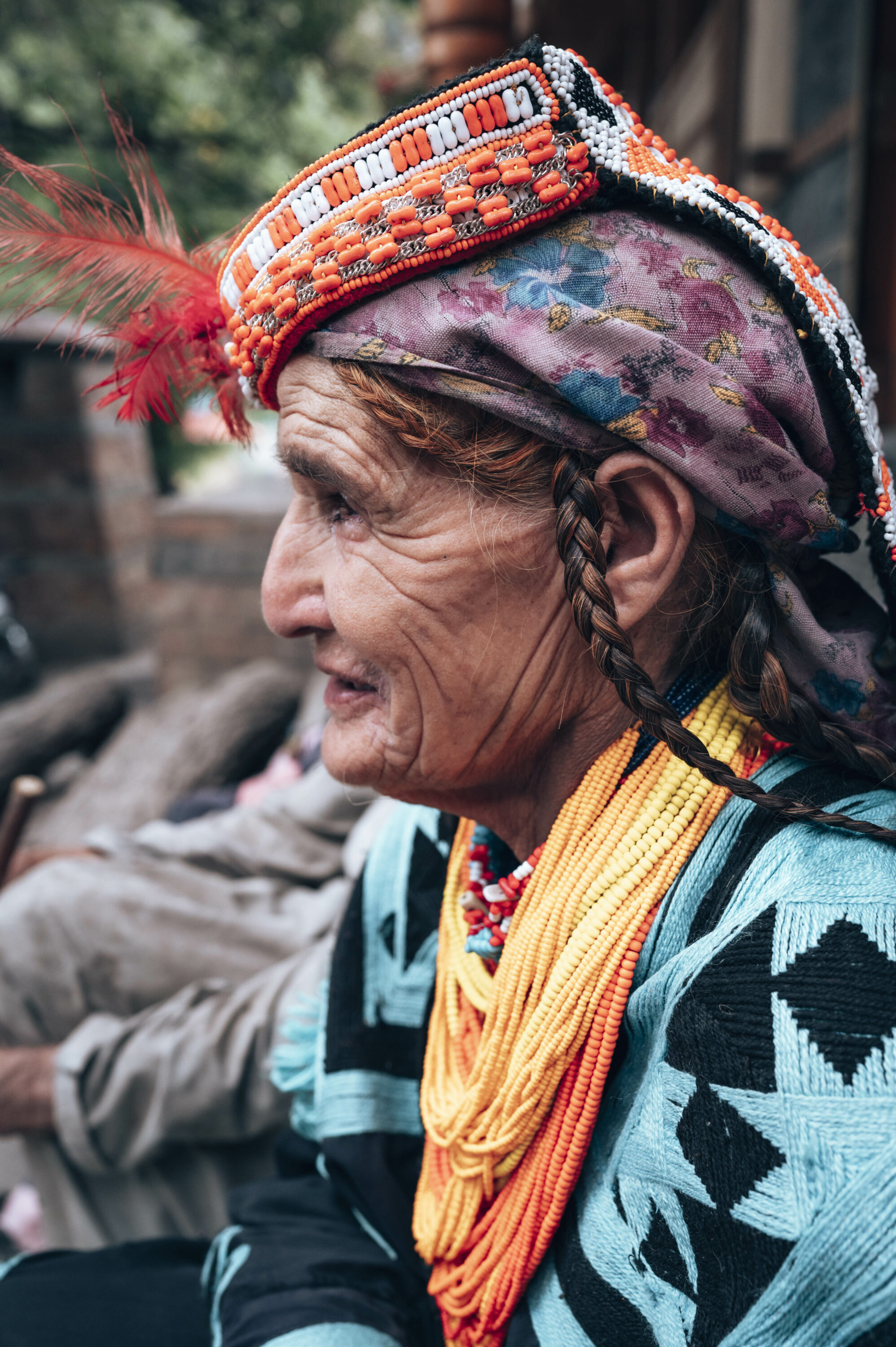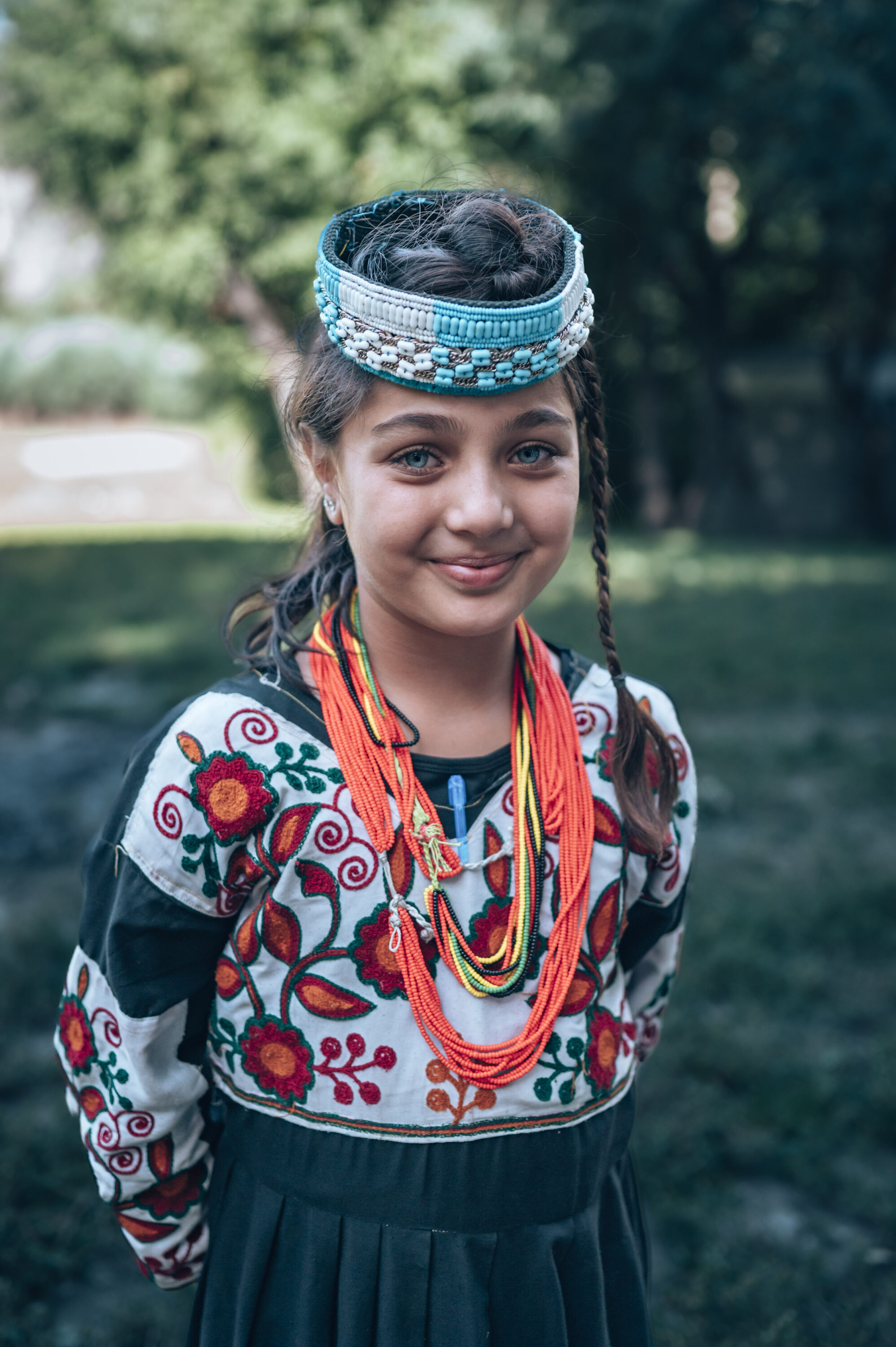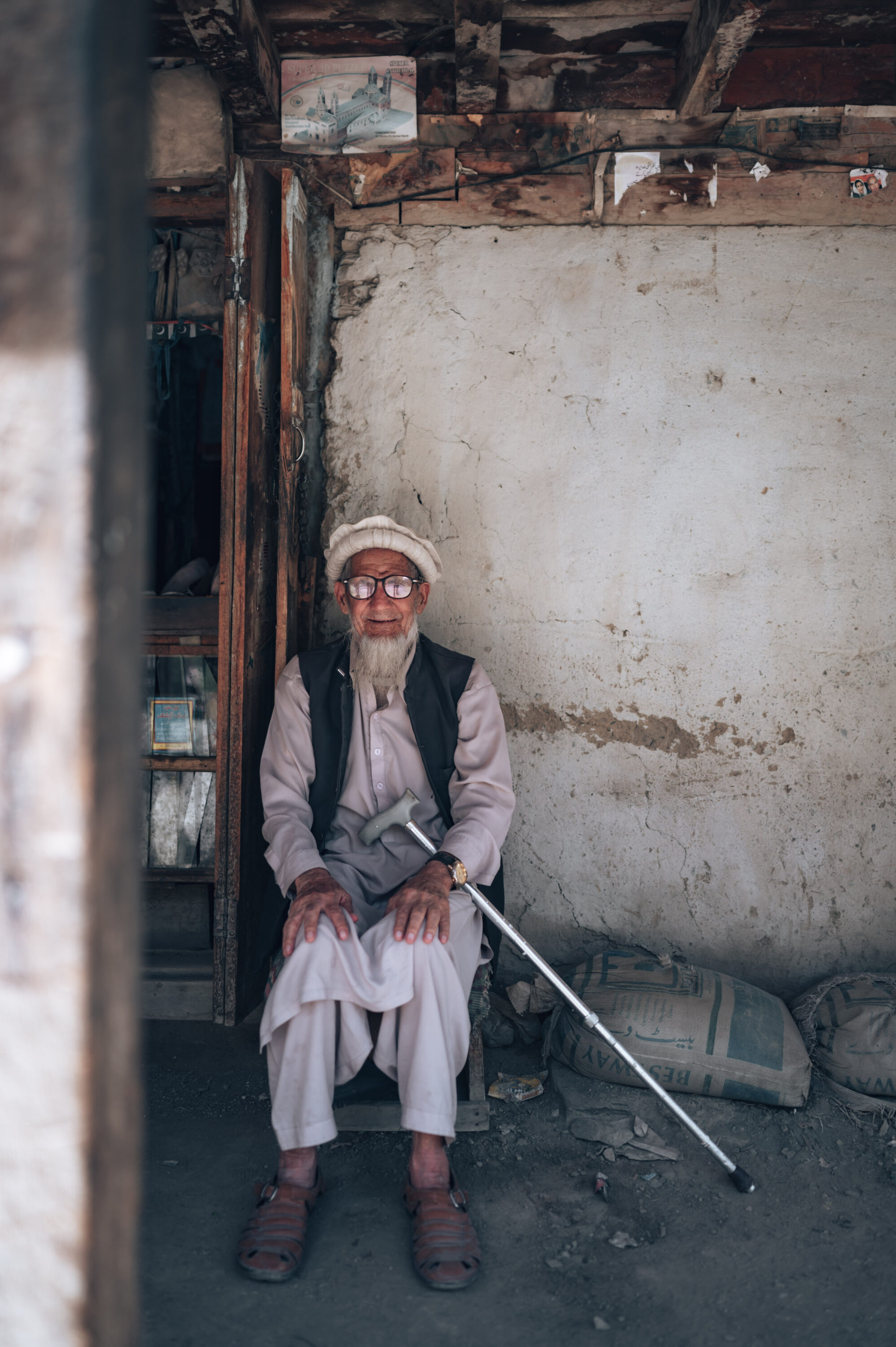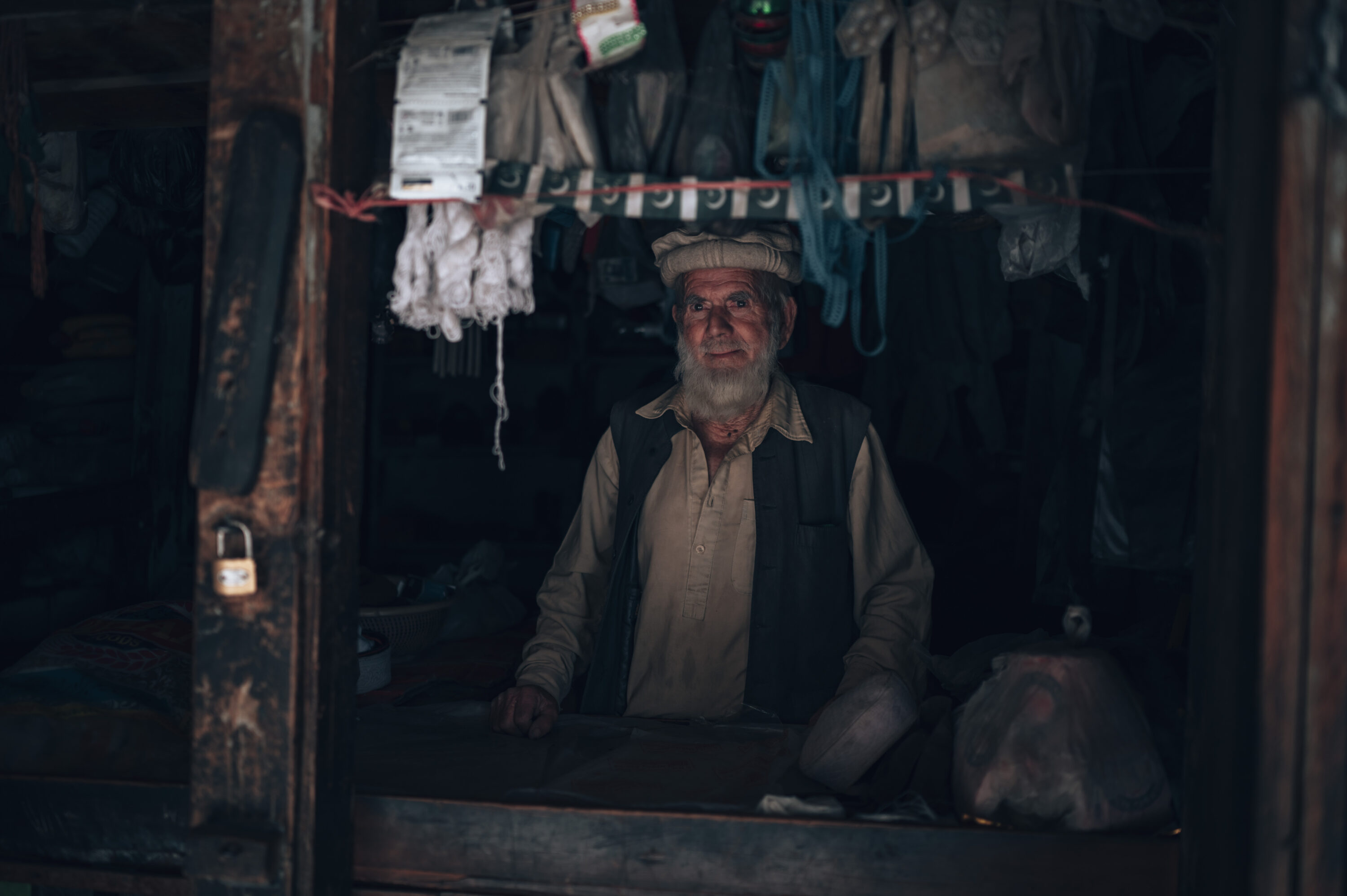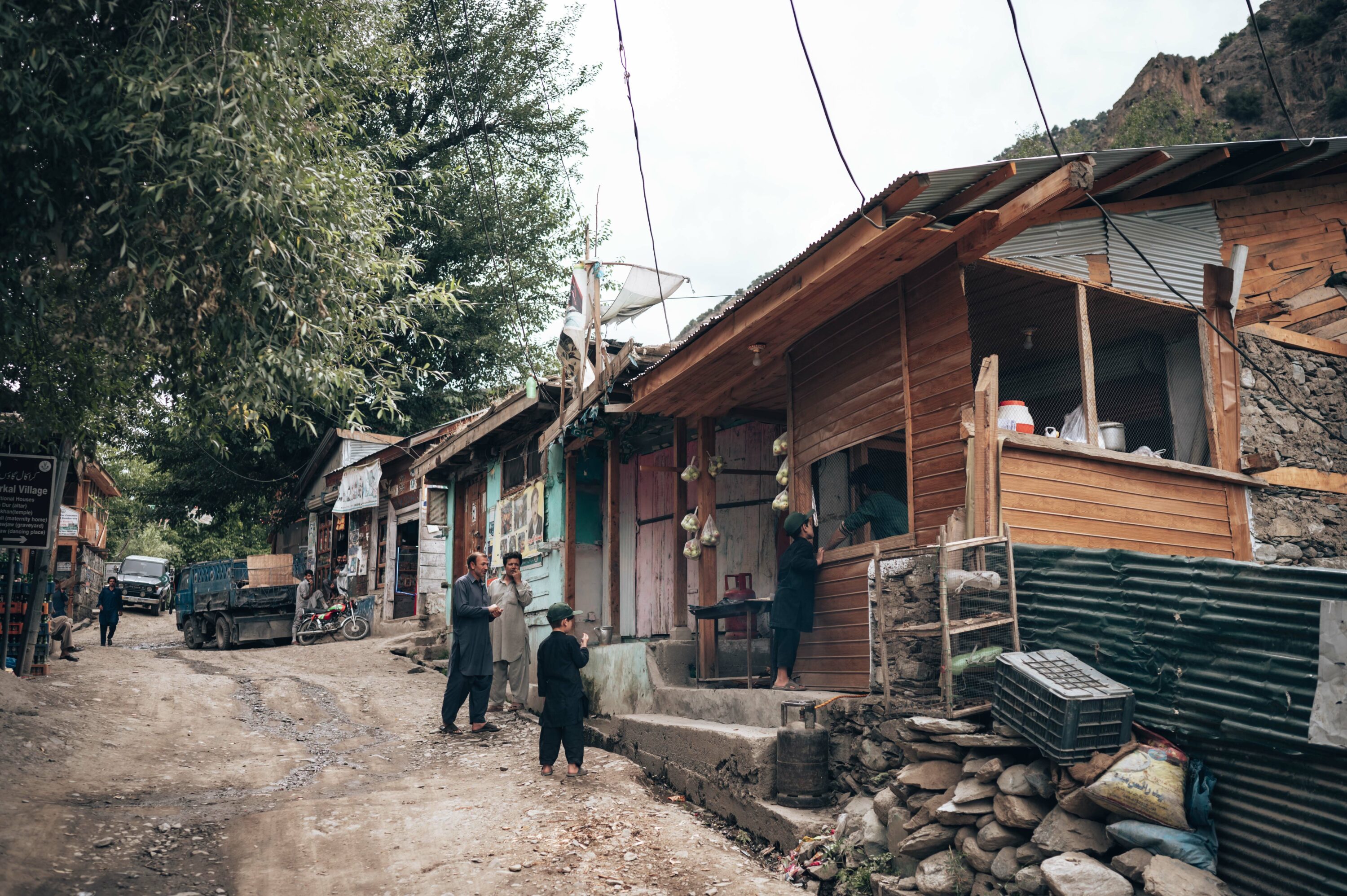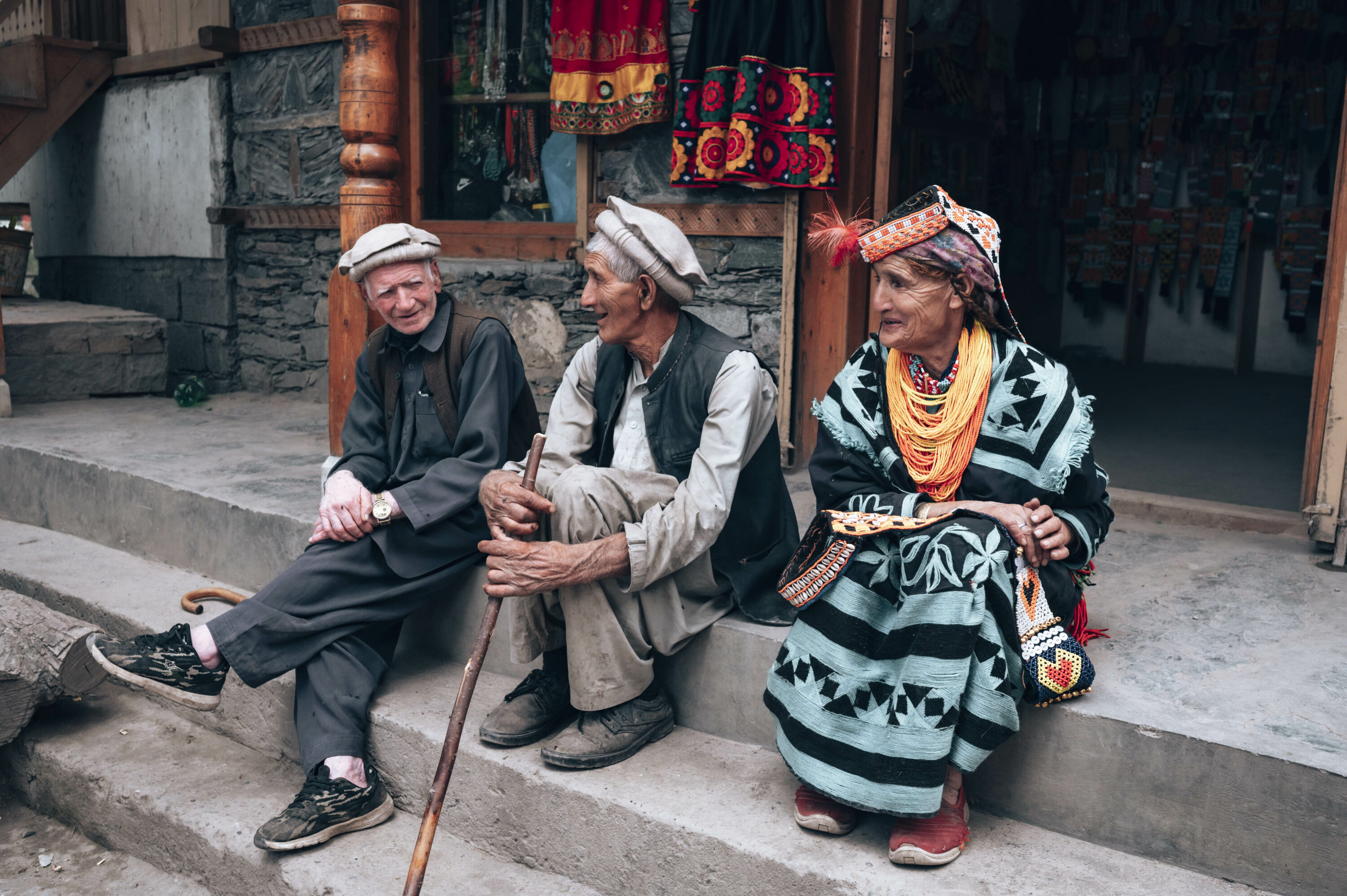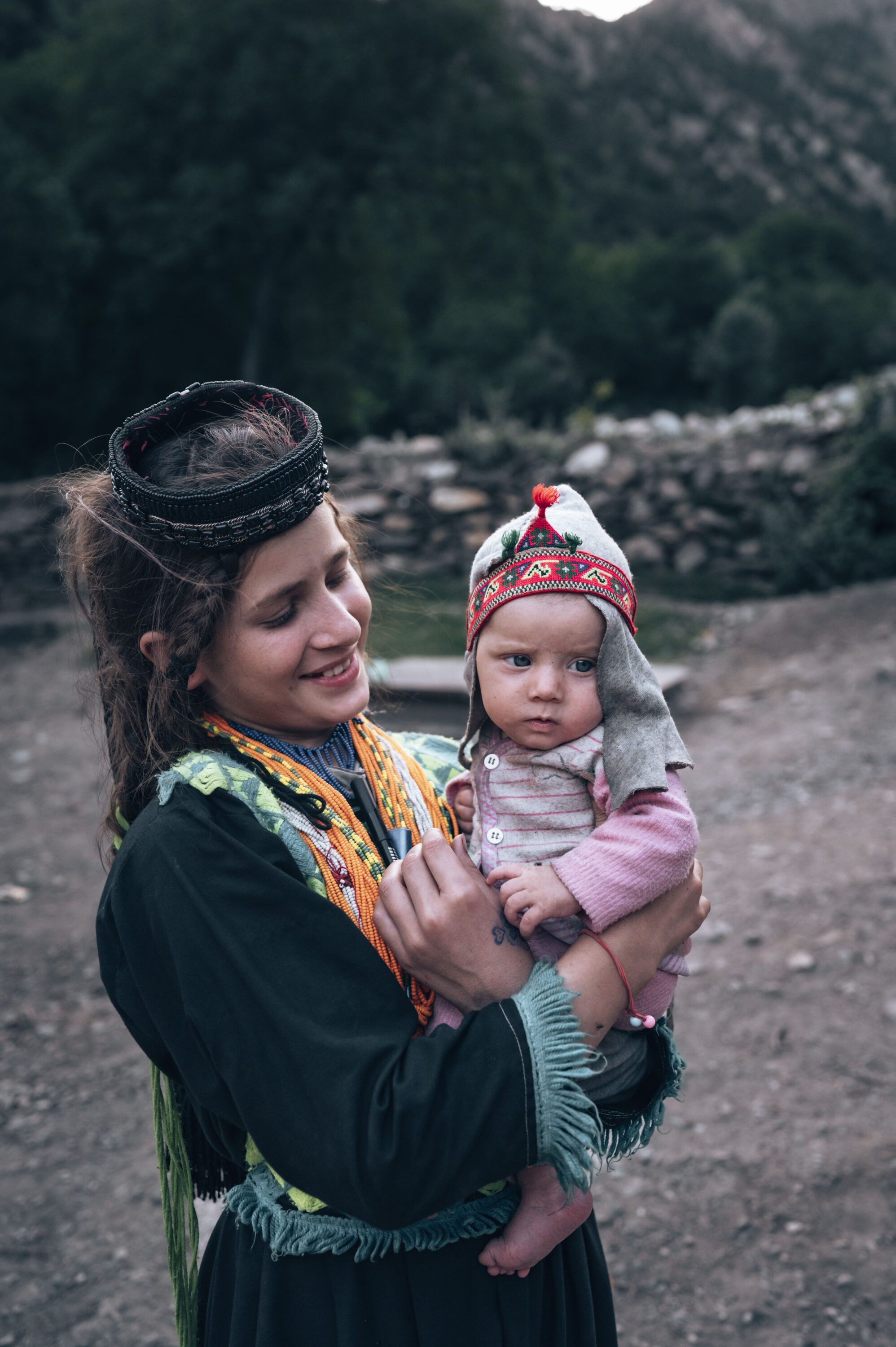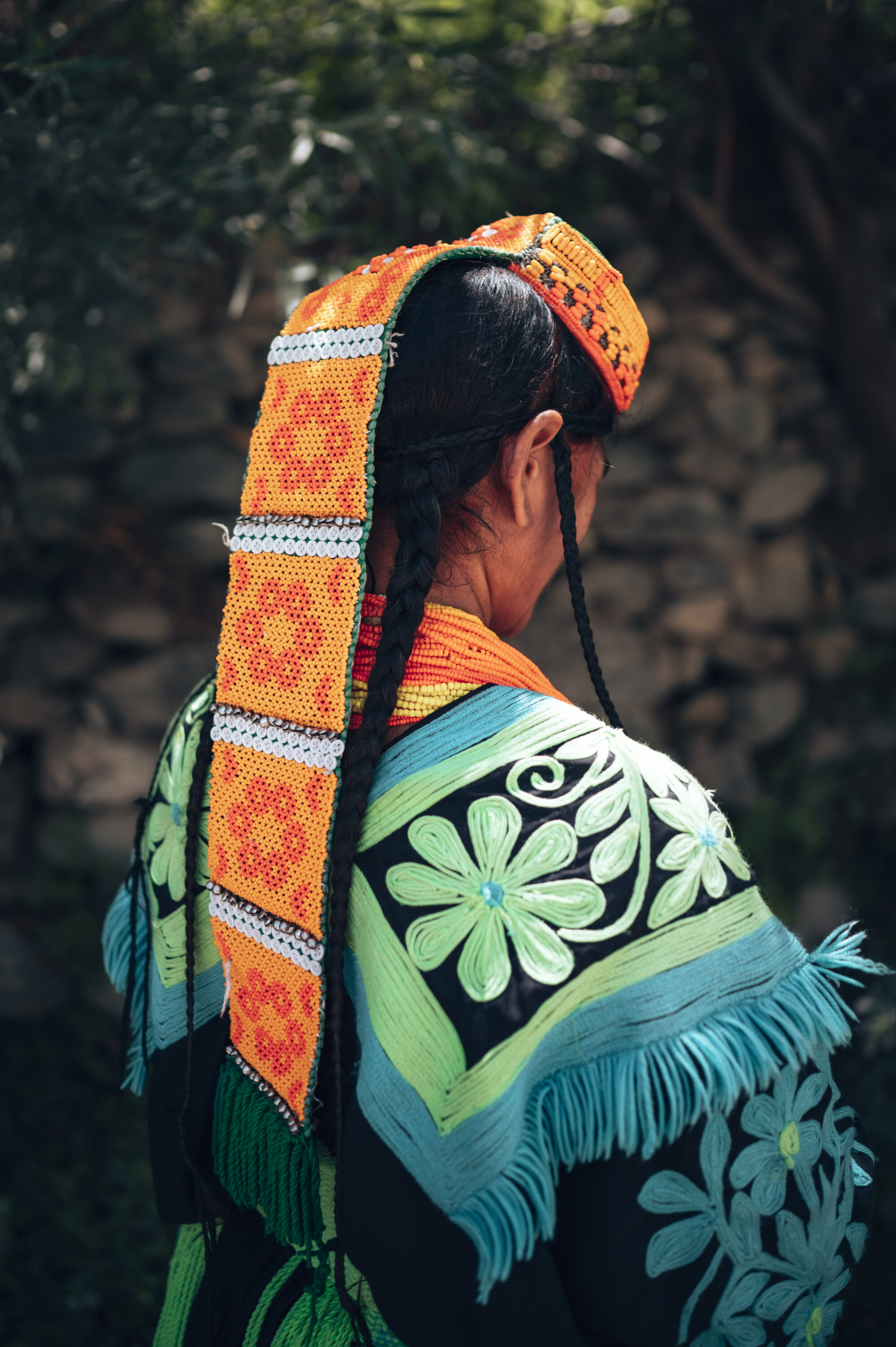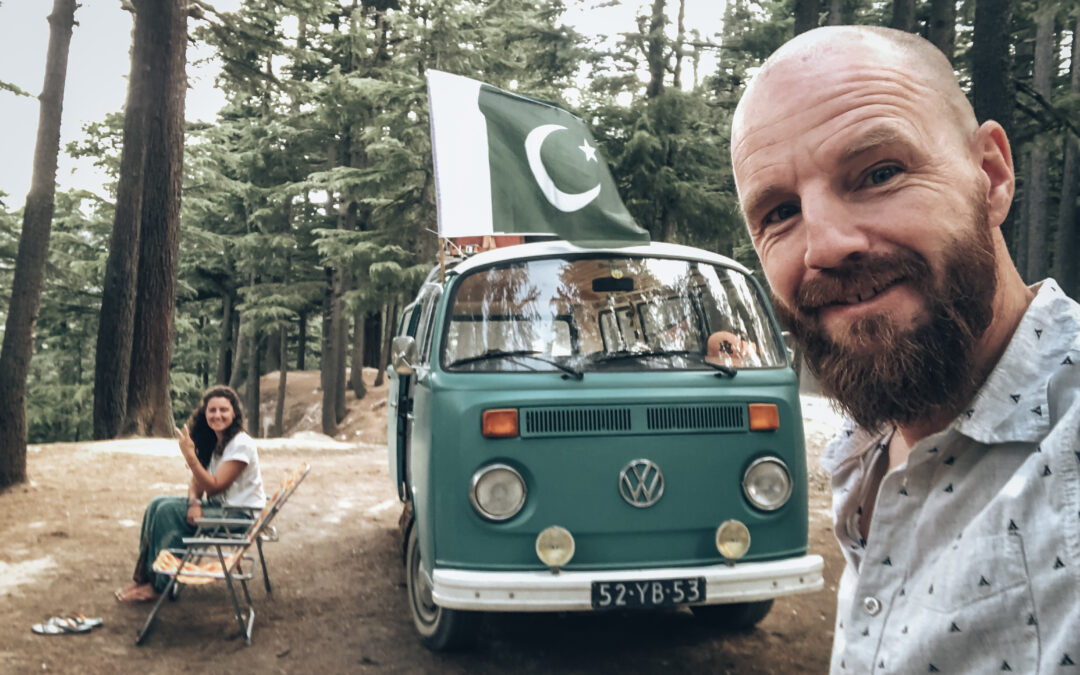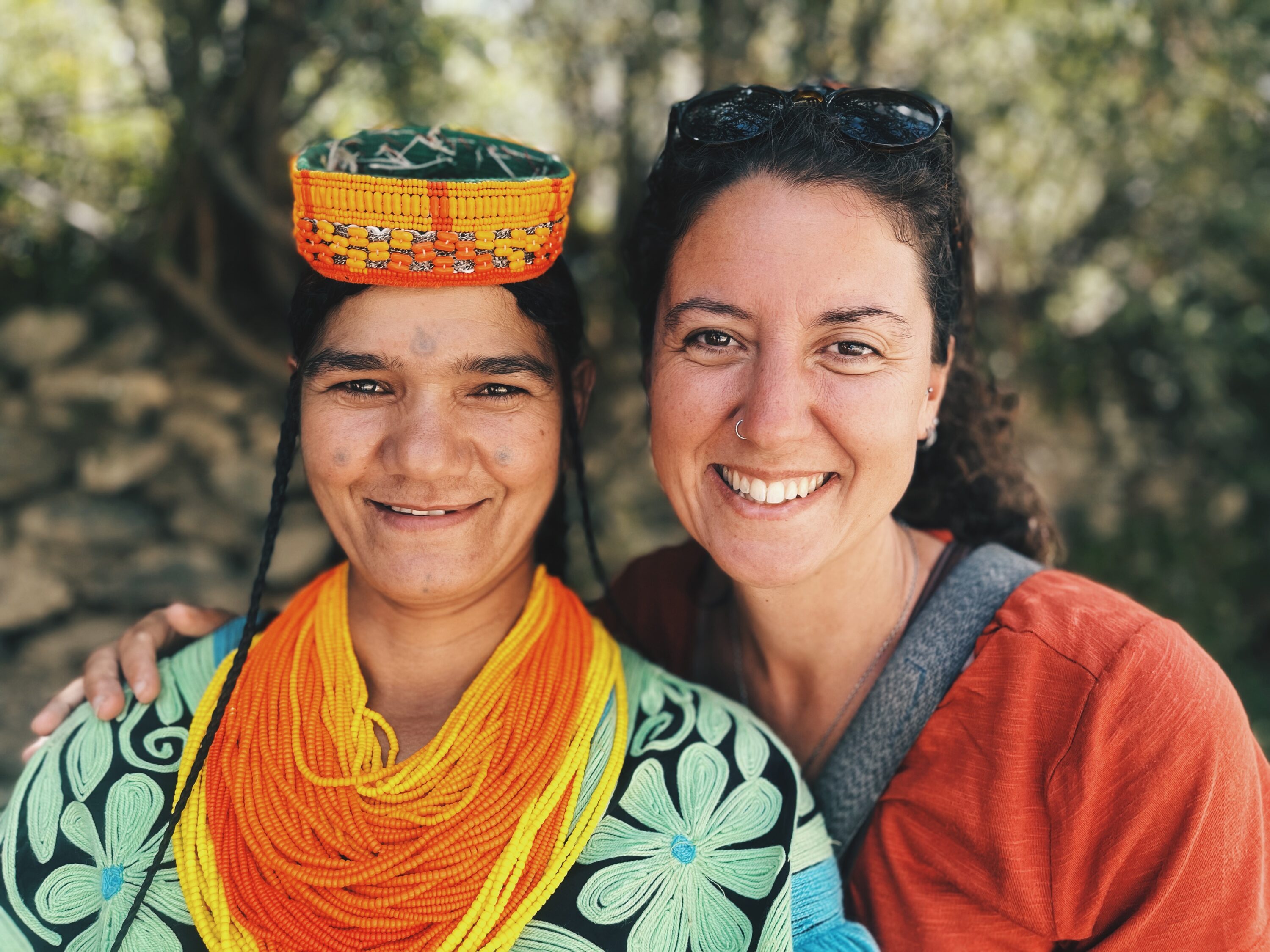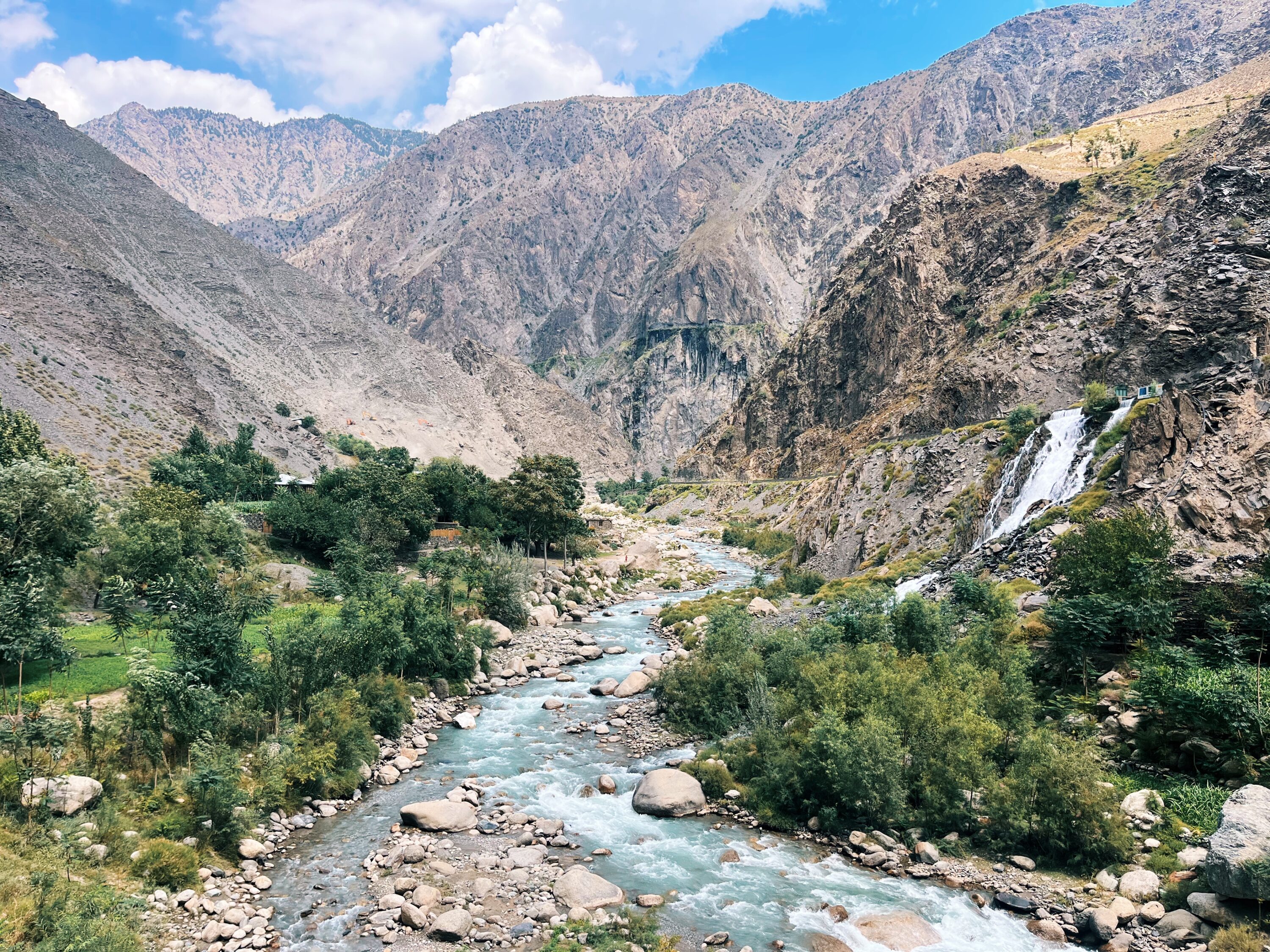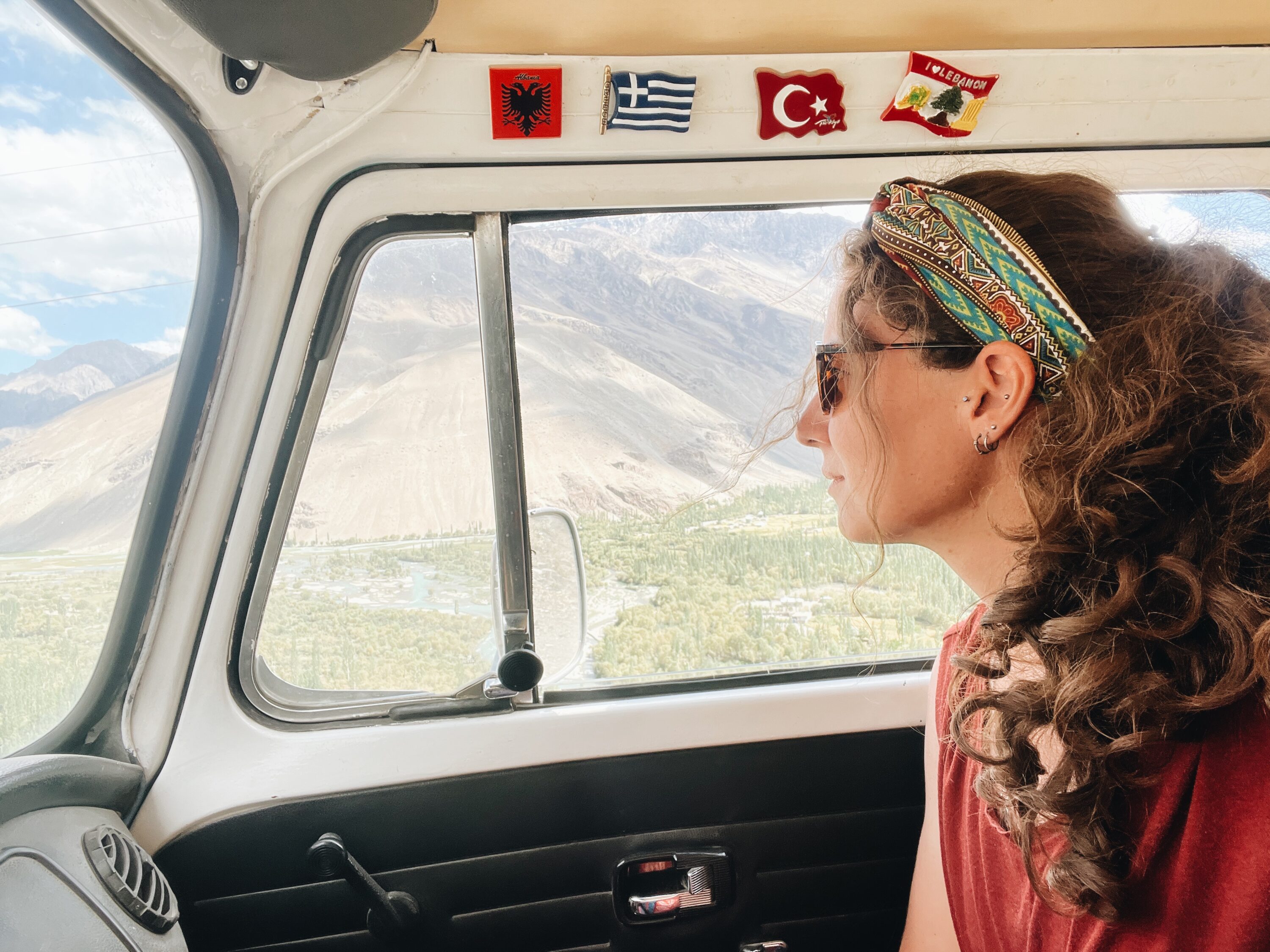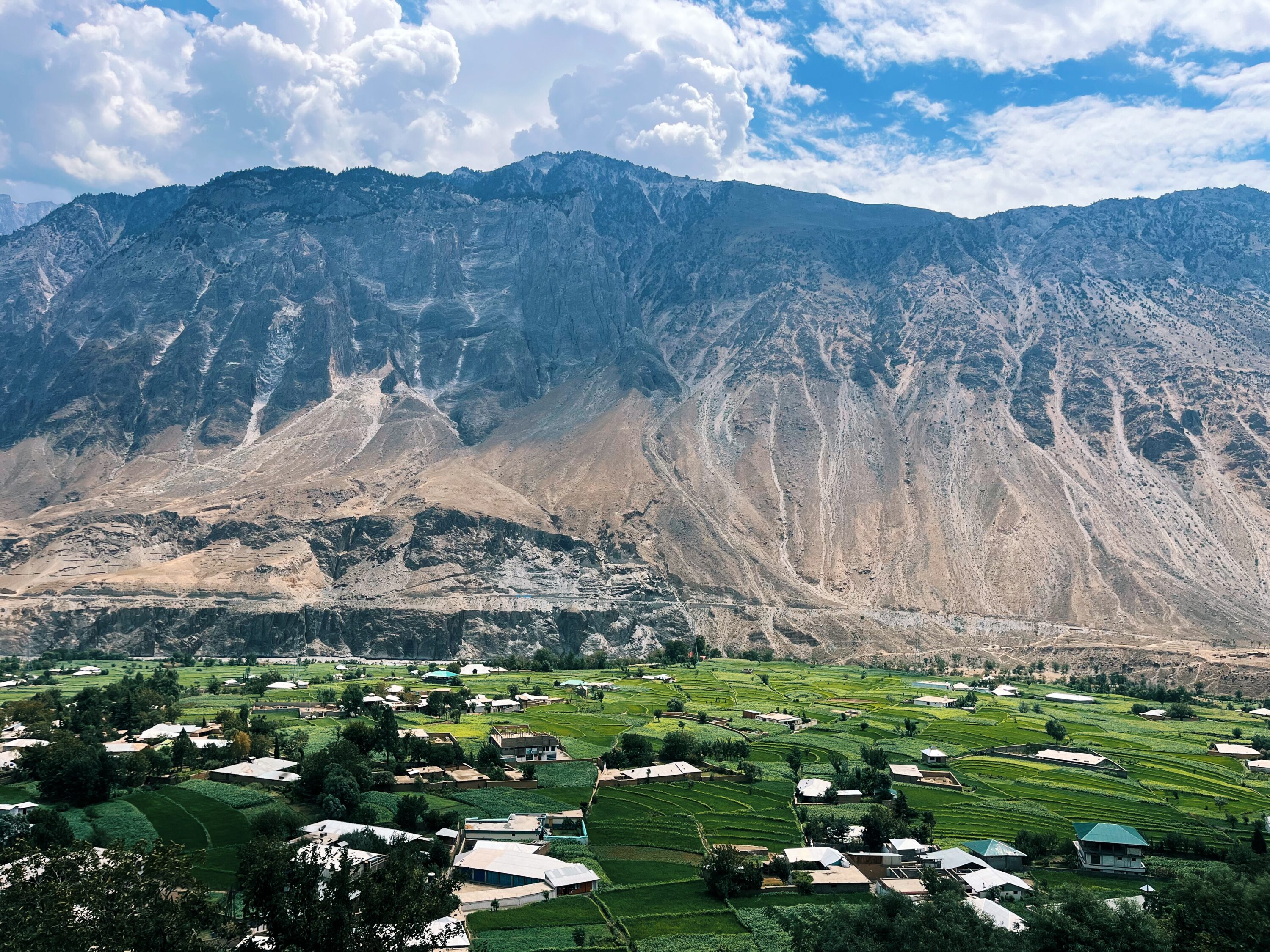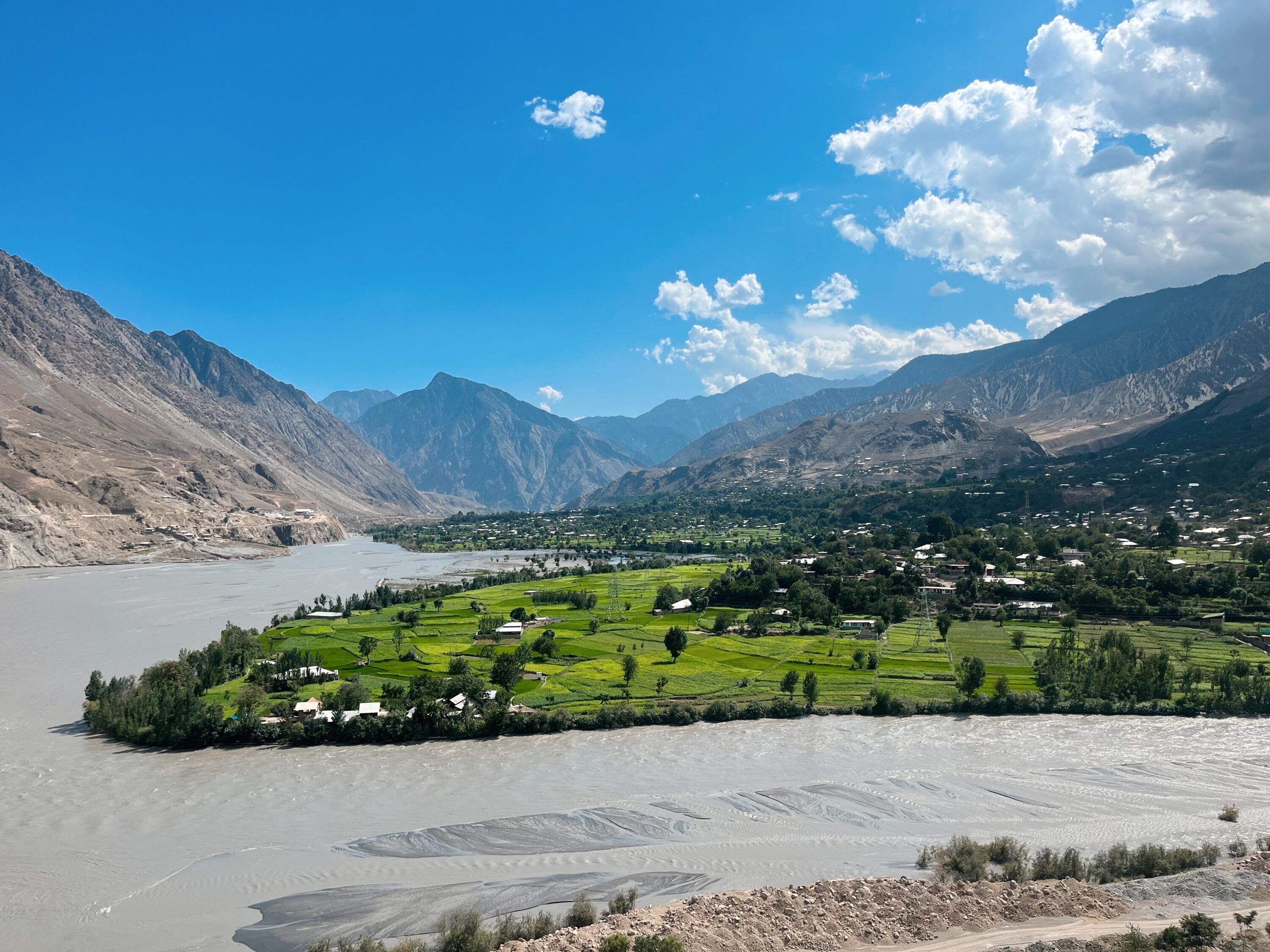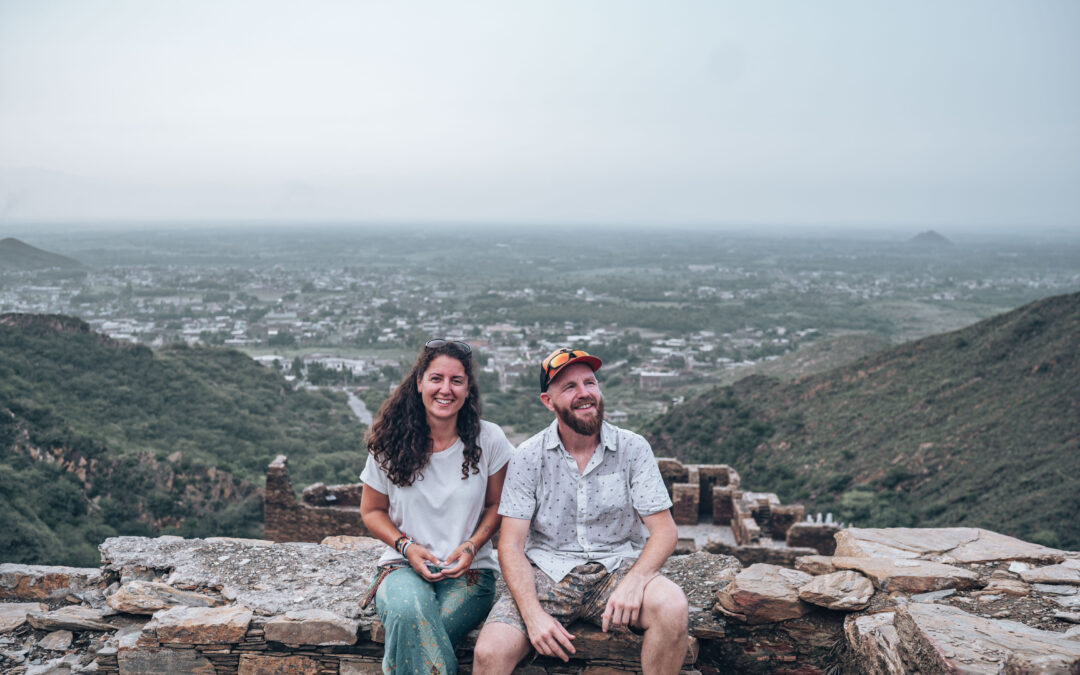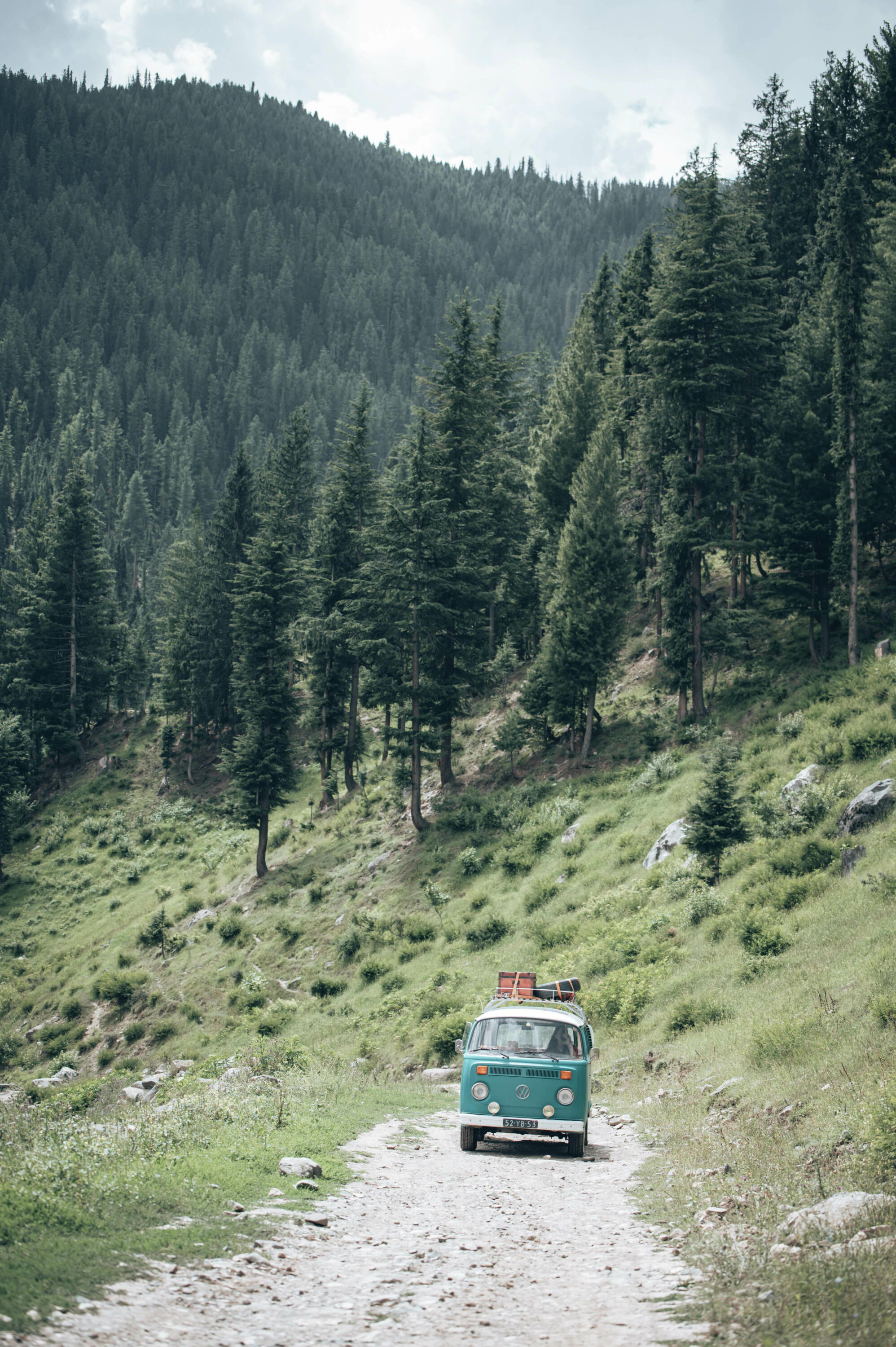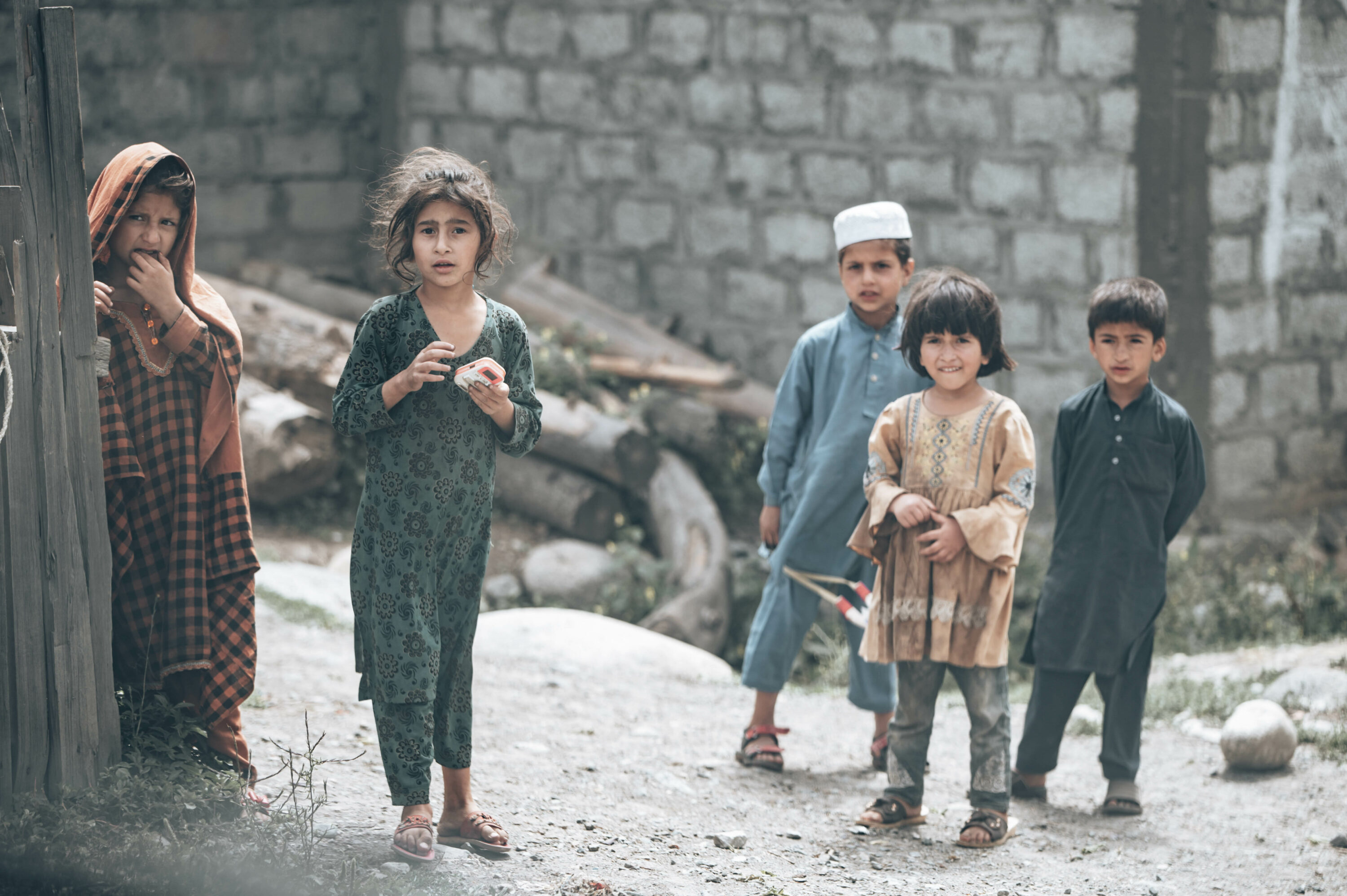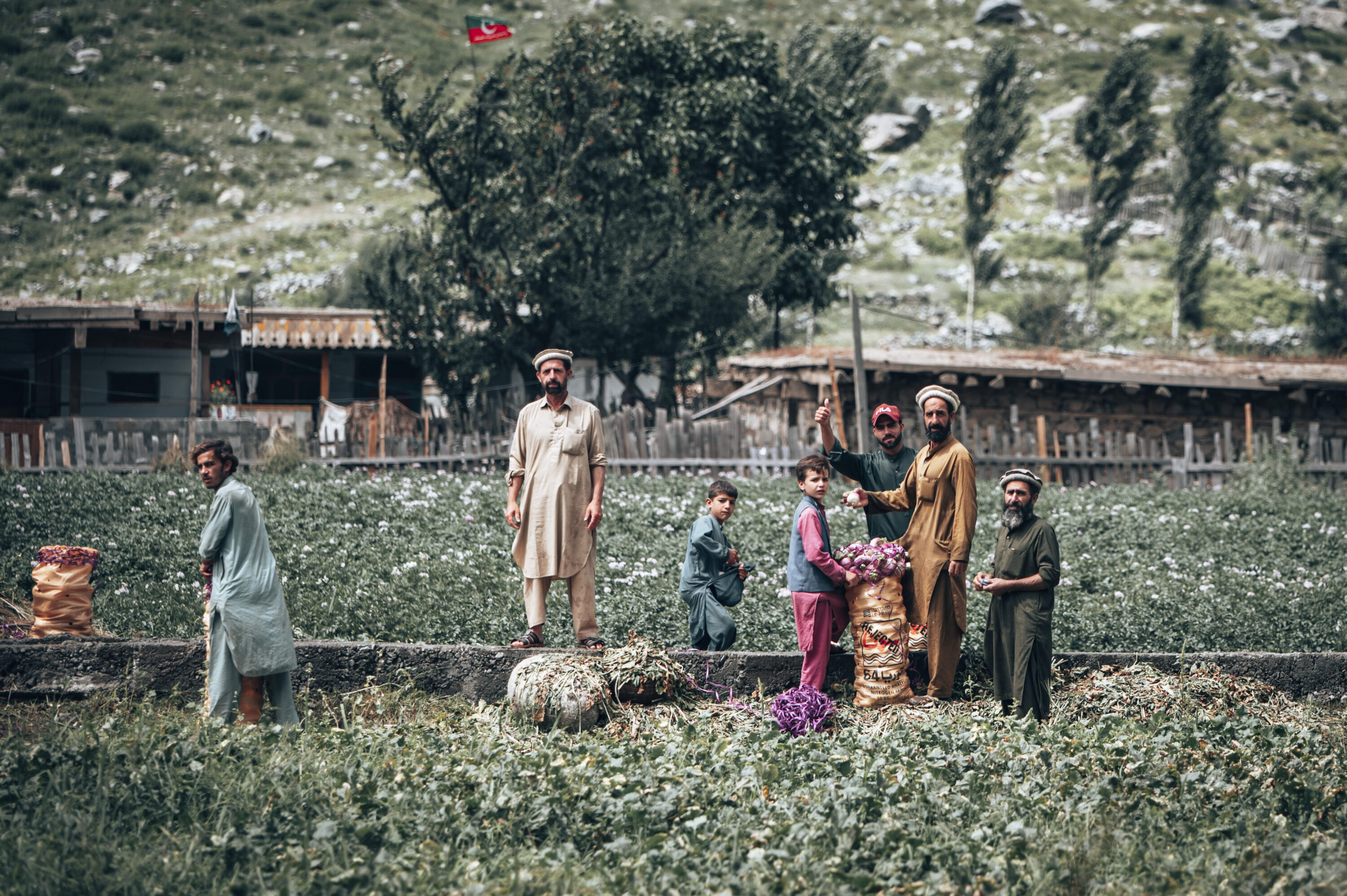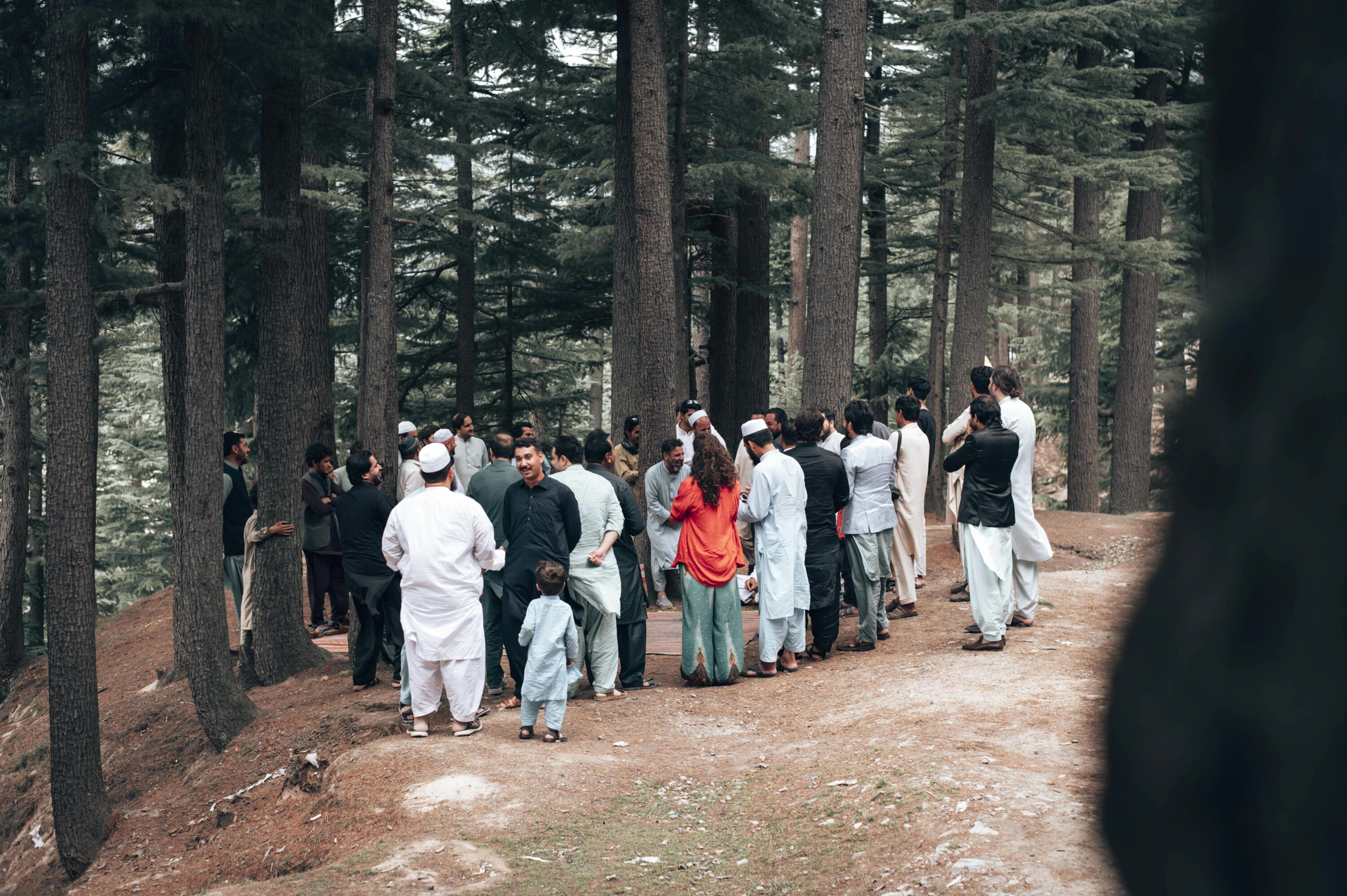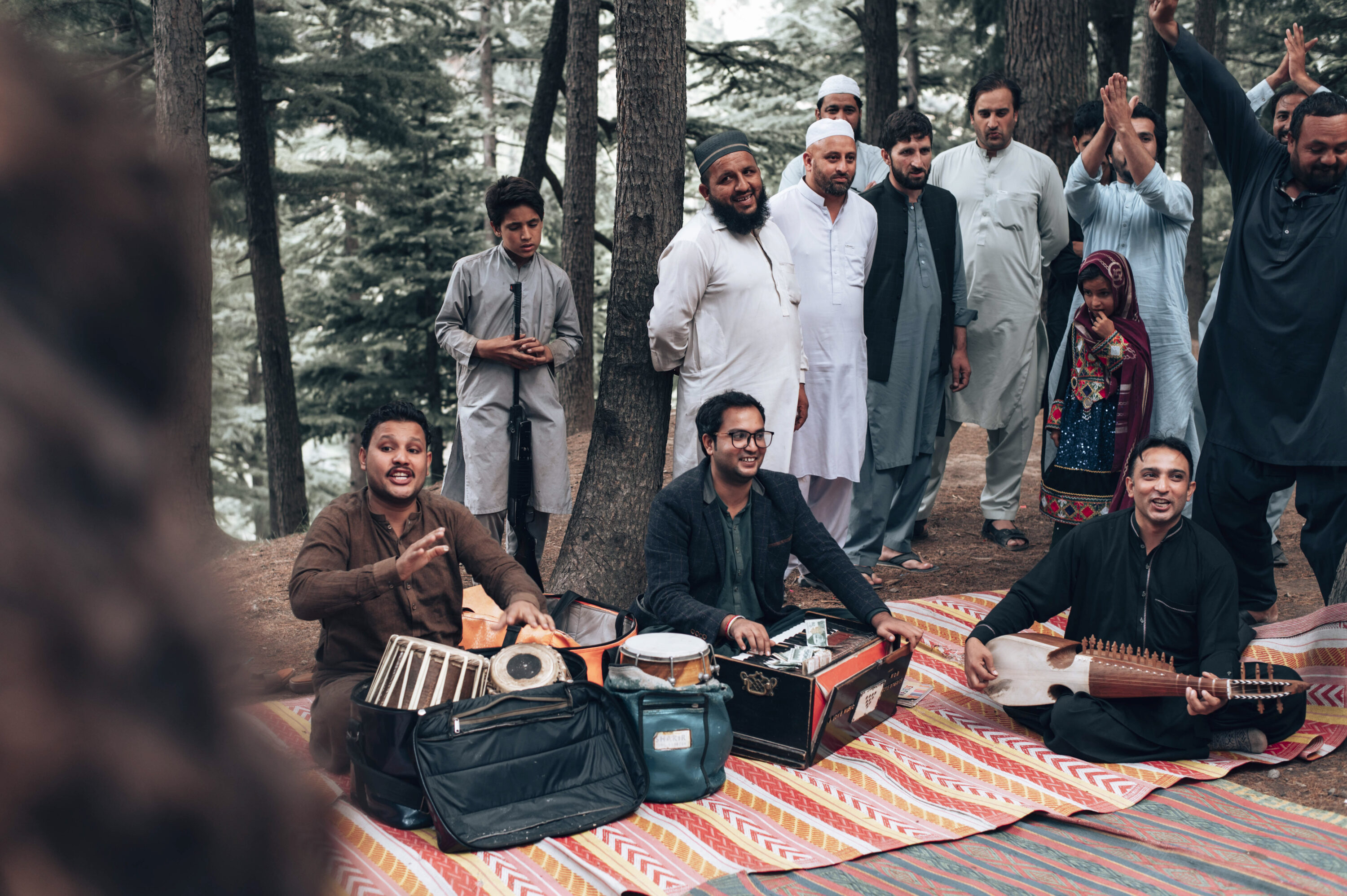Probably one of the most touristy spots of Pakistan, normally we would ignore places like this and skip them. However, friends told us it’s definitely worth it so here we are, sitting in a jeep on a steep mountain waiting for people to clear a landslide. It just...

Bunch of Creatives
Bunch of Creatives
Dark clouds on my left, beautiful sun rays on my right and in front of me a little river finding it’s way through green pastures and bare mountains. Every now and then we see the head of a golden marmot above the grass. Some blue sky finds clearance in between the clouds that seem to flee from the mountains on which the white snow is the cherry on top.
The Pakistani highlands
It’s not cold but refreshing while the wind blows through my clothes and the sun rays appear and disappear on my face. I got sunburned and put some local oil on my face. It is so tranquil and beautiful here our hearts are filled with eternal love for this place. It beats faster of excitement when the landscape changes as the clouds move above the incredible landscape.
The road was tough and not without challenges. It started with steep, rocky and bumpy roads but impeccable views up to 2.400 meters. At this point we reached the plain that makes Deosai National Park one of a kind. Although, it does remind me of my beloved Cairngorms in Scotland. I fell in love there and I fall in love here. The weather seems quite the same as does the landscape. Even the roads show signs of similarities. But we’re not in Scotland, were in Pakistan. So as soon as we reach the top of the road we are welcomed by selfie loving Pakistani people. All very kind but it takes away the magic. So, after a couple of vansies and selfies we continue our trip.
The fellowship
Adeel, Rosie, Talhaa and us. A unlikely but amazing fellowship exploring the HImalaya and the limits of creativity together. Well, guess what? There aren’t any limits to creativity. For days we enjoyed filming and photographing together.
Adeel is a Pakistani adventurer, the first digital nomad of the country and knows so so much about the country. Then there is his wife Rosie. She’s from Canada and a true explorer. She rides a bike fearlessly and is a Pakistani celebrity. Then there is Talhaa, a very talented Pakistani videographer with endless energy.
Stuck in the mud
While everyone (another thing different from Scotland – it’s kind of crowded here) moves straight we take the dirt road left. No adventure without off the beaten tracks. And while we venture once again beyond the ordinary we find ourselves in the most awesome environment we could wish for. Far away from human settlements and totally out of reach.
That last one is a bit tricky here because the dirt road becomes a bit of a mud road with deep pools and slippery parts. Of course I take a wrong decision and we end up being stuck in the mud. But, nothing we can’t handle. We have been stuck before and learned from that. Stones in front of and behind the wheel. Then, I’ll get Alexine in motion. To the front, to the back, she turns into a rocking boat. It reminds me of Jack Sparrow in ‘the end of the world’ where he rocks the ship back to the land of the living. We rock Alexine as well, although we don’t rock her upside down she does move and with some strong push work of Yuri we get her out! Screams of happiness “we did it!! We did it ourselves!” When you travel the world in a van you’ll experience these moments of true pride quite often. When we changed our tire within 20 minutes, when we got Alexine up a very steep 4×4 road, when we fixed an engine problem and when we got her out of the mud. You’ll find out you are capable of things you didn’t know you were and you’ll get so creative. All you have is all you need and all you ever and what you don’t have you don’t need.
So, there we went, all by ourselves. We almost had a crash with another vehicle. The road is narrow and while both cars went to the sides we both leaned over towards each other. It was almost like two deers whose antlers are tangled after a fight. The other vehicle was carrying loads of gras, so Alexine got fully covered in it. Luckily, that was the only “damage” done.
At some point I thought enough is enough. The muddy road got worse and the light was leaving us. Besides we were supposed to meet up with our friends Adeel, Rosie and Talhaa. To explain who they are I’ll go back a few days.

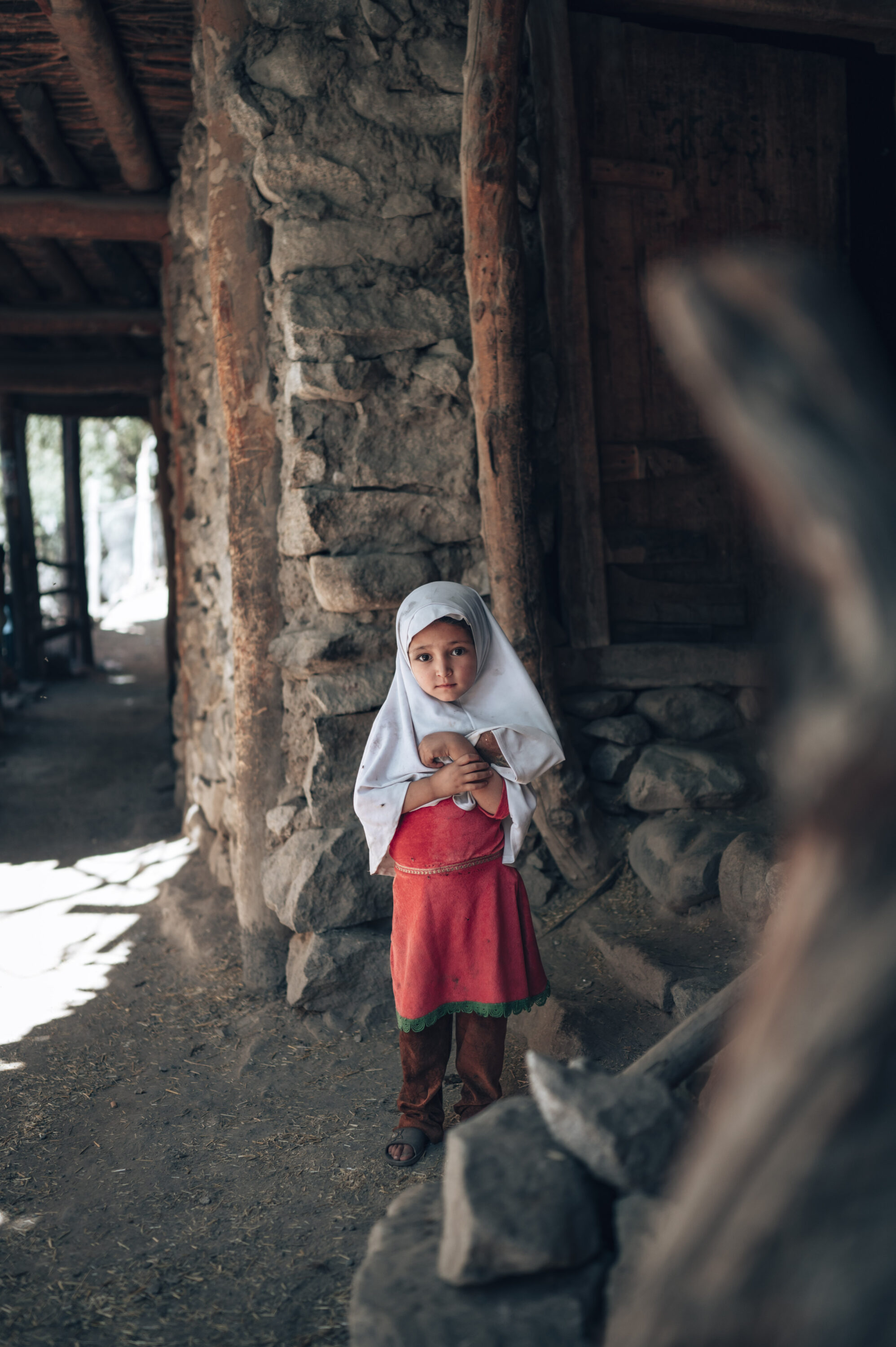
Welcome to the cold desert
After reaching the border with China it was time to explore more of the North of Pakistan. Thus we moved our lazy asses to Skardu where we would hopefully find enough energy to do some proper hiking. I mean, we’re in the Himalaya and who doesn’t hike in the Himalaya?
We drove the awesome highway to Skardu, where lots of travellers arrive who hike to K2 base camp. That’s not our plan. We like hiking but we’re not the type of people that need to hike to a base camp or something. Nothing to prove ourselves, although I’m still proud we made it to the top of the highest mountain of a Oceania.
We got ourselves to Skardu and without a plan moved to the cold desert (2200 meters) where we would stay for the night. We wanted to get out of Skardu as soon as possible, it’s nothing more than a busy and quite touristy city. However, we needed to sort some things out and while we were on our way we met with Adeel & Rosie. We’ve been following them on Instagram for a short while and were really inspired by their travels and thirst for adventure. So, we turned and moved them to their hotel. There we got to talk for hours and decided to meet up the next day to go to Khaplu all together.
Easily said and done! We slept in the desert again (great place! So quiet and peaceful). The next day we drove to Khaplu where we had delicious lunch at a hotel. Afterwards we explored the very unique village of Bhara. The village is unique because of its architecture. When you get off the main road and into the village you immediately know this is different. You find yourself in tiny alleys above which people live in homes that are built with living rooms on the first floor. The cattle stay on the ground floor. Some homes are attached and a little pathway squeezes itself in between homes below. Good for winters when it’s very cold here and snows a lot. In the winter however, people do not stay in their normal homes. They move to the cellars with their cattle to keep warm. They live like this for three months. While we walk through the village we are the attraction of the day. Everyone comes out to check on us. A pity we aren’t allowed to photograph the women because they look amazing with their incredibly colourful dresses. I love it when people wear colours, it makes the world a happier place. A local who, speaks English, shows us around and tells us about the culture and architecture. He also buys us some dried apricots. “This is a welcome to you, because you are our guests” he says.
After our brief visit we get into the van to drive to a crystal lake around the corner. Well, not really around the corner. It takes us 45 minutes because we have to cross the thundering river. The river that often floods villages located on the banks. The river is mainly dirt and looks like a bit mud stream. But on the banks of the river there are some pools where the sand doesn’t twirl because of the current and those places are as crystal clear as glas. Wow!
Unfortunately for us there is no camping place next to one of these lakes so we find ourselves a spot next to the raging river. A bit later Adeel, Rosie and Talhaa arrive. We make camp here for the night, have diner together and lots of stories to tell. Rosie is a famous Youtuber (especially in Pakistan), she is a biker and solo traveller. She lived in Oman for 13 years and biked 11.000km’s through Pakistan on her own. She documents that in movies and on Instagram. She’s a legend and such a kind and heartwarming person. Three years ago she married with Adeel. Adeel is Pakistani, also a biker and loves to connect (and talk) with people. He is such an open person and always in for a talk. I have rarely met such an open, kind and hospitable person. And then there is Talhaa, a young man and so promising. Talhaa is a videographer with a keen eye for unique perspectives and beautiful lighting. Together we form a bunch of creatives. Great company and very inspiring.
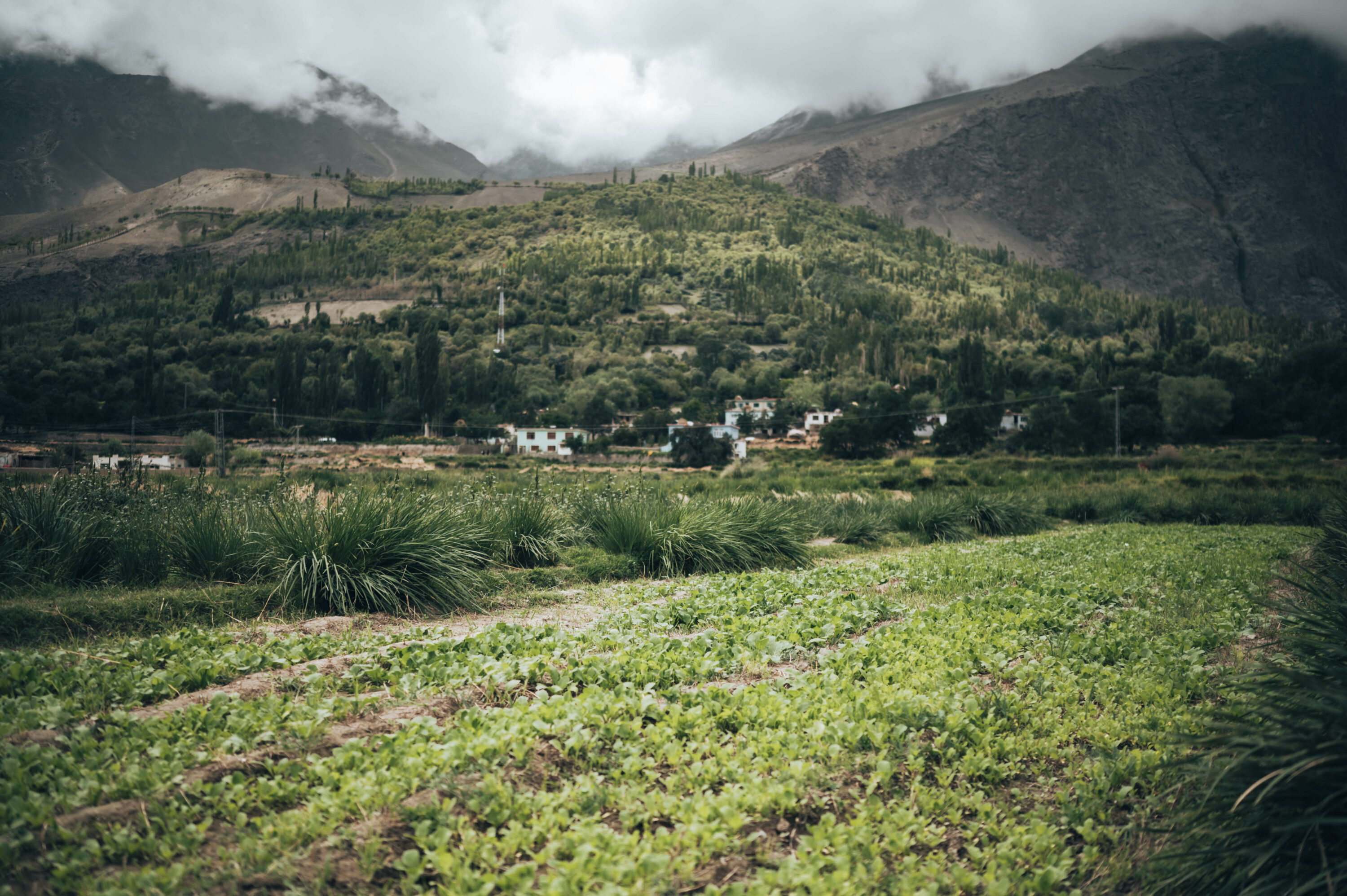
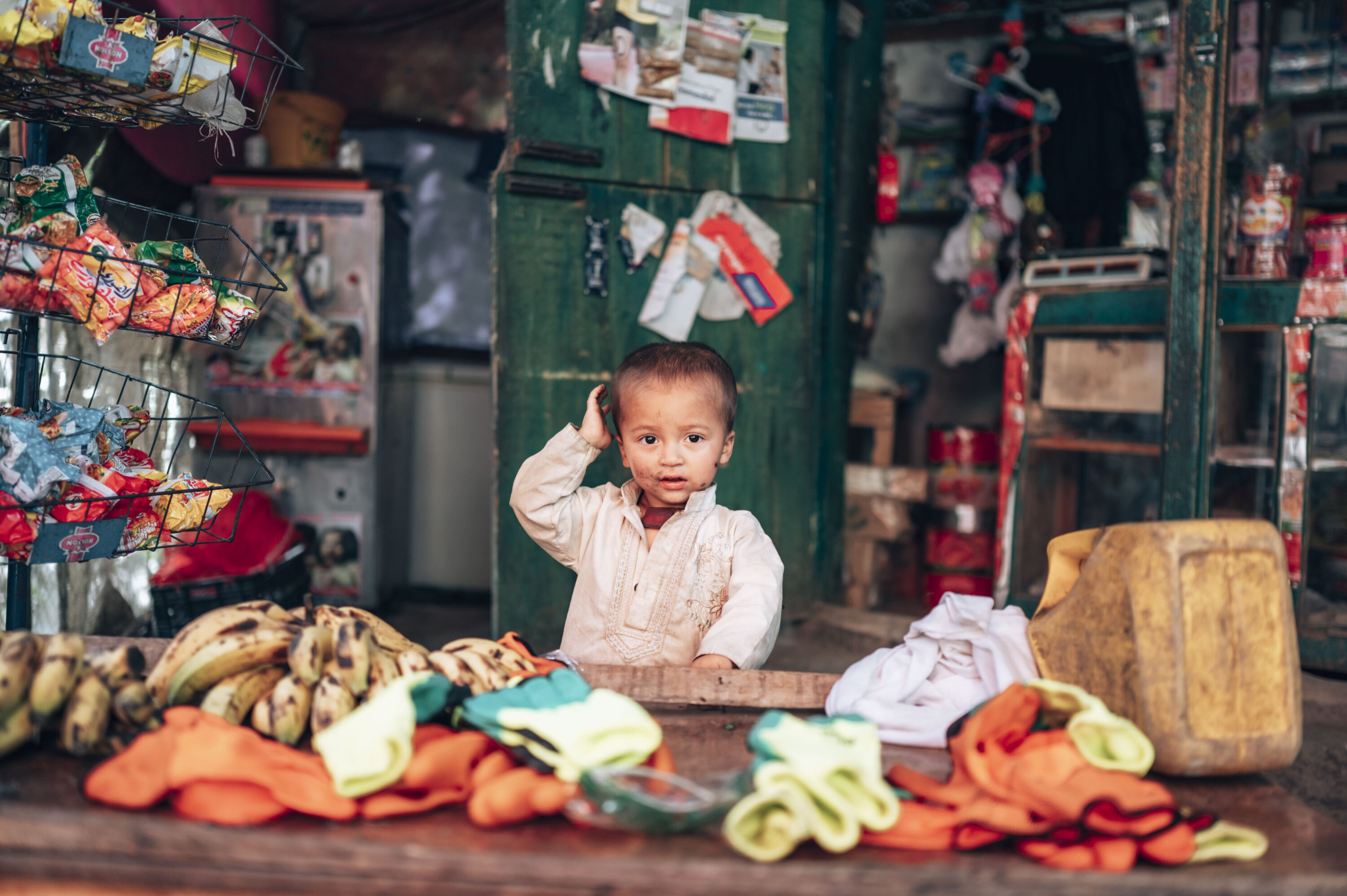
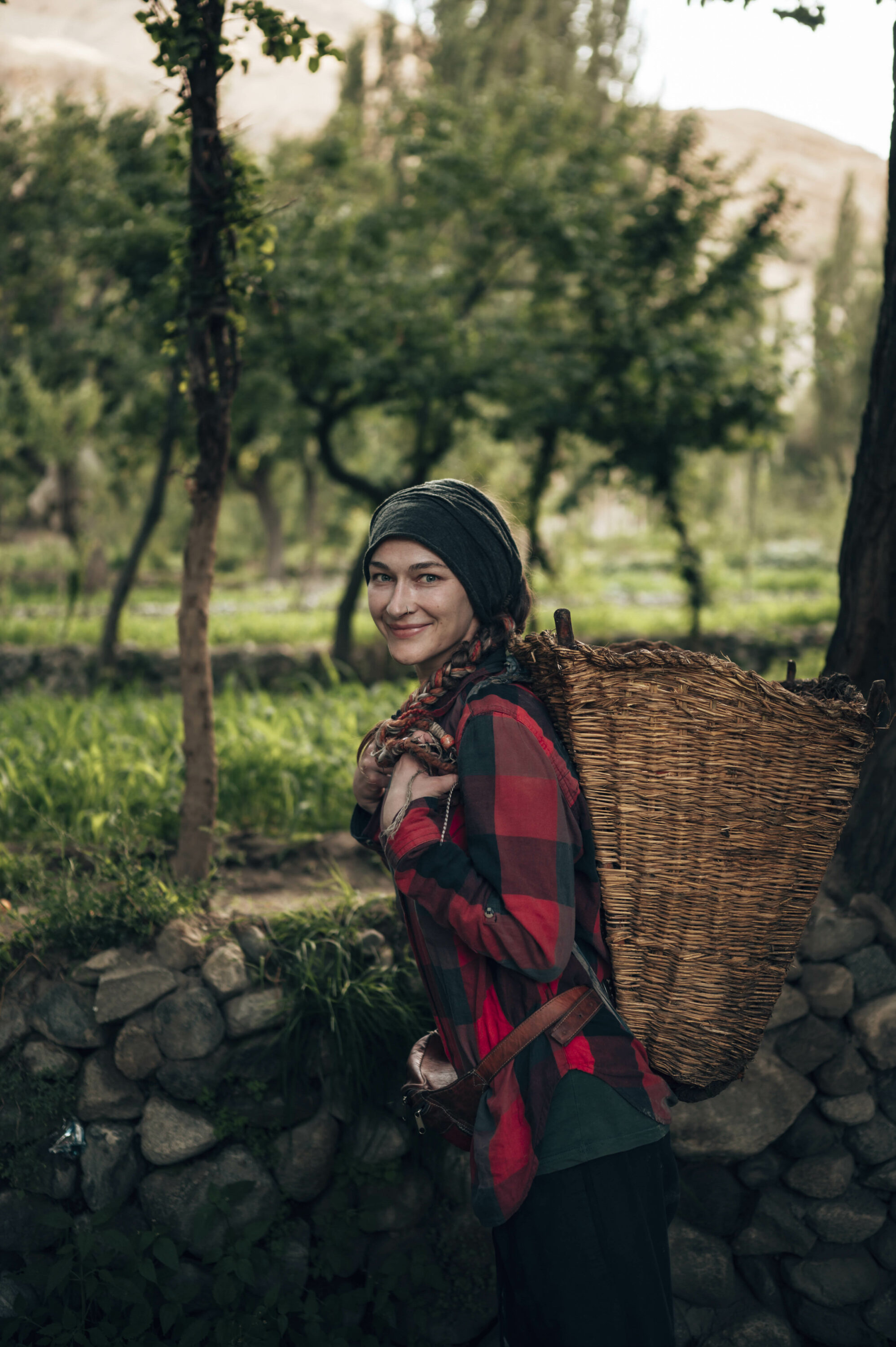
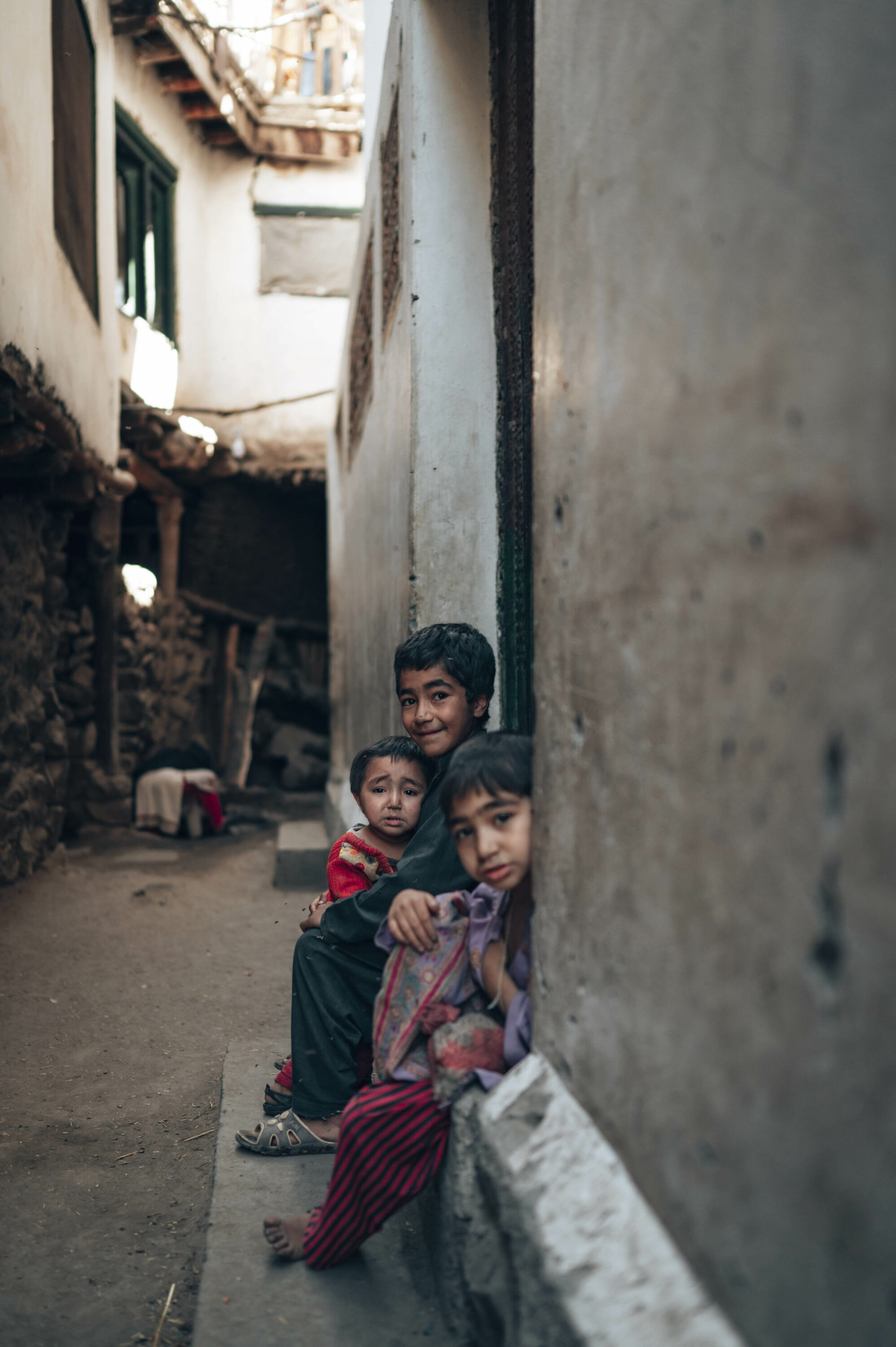
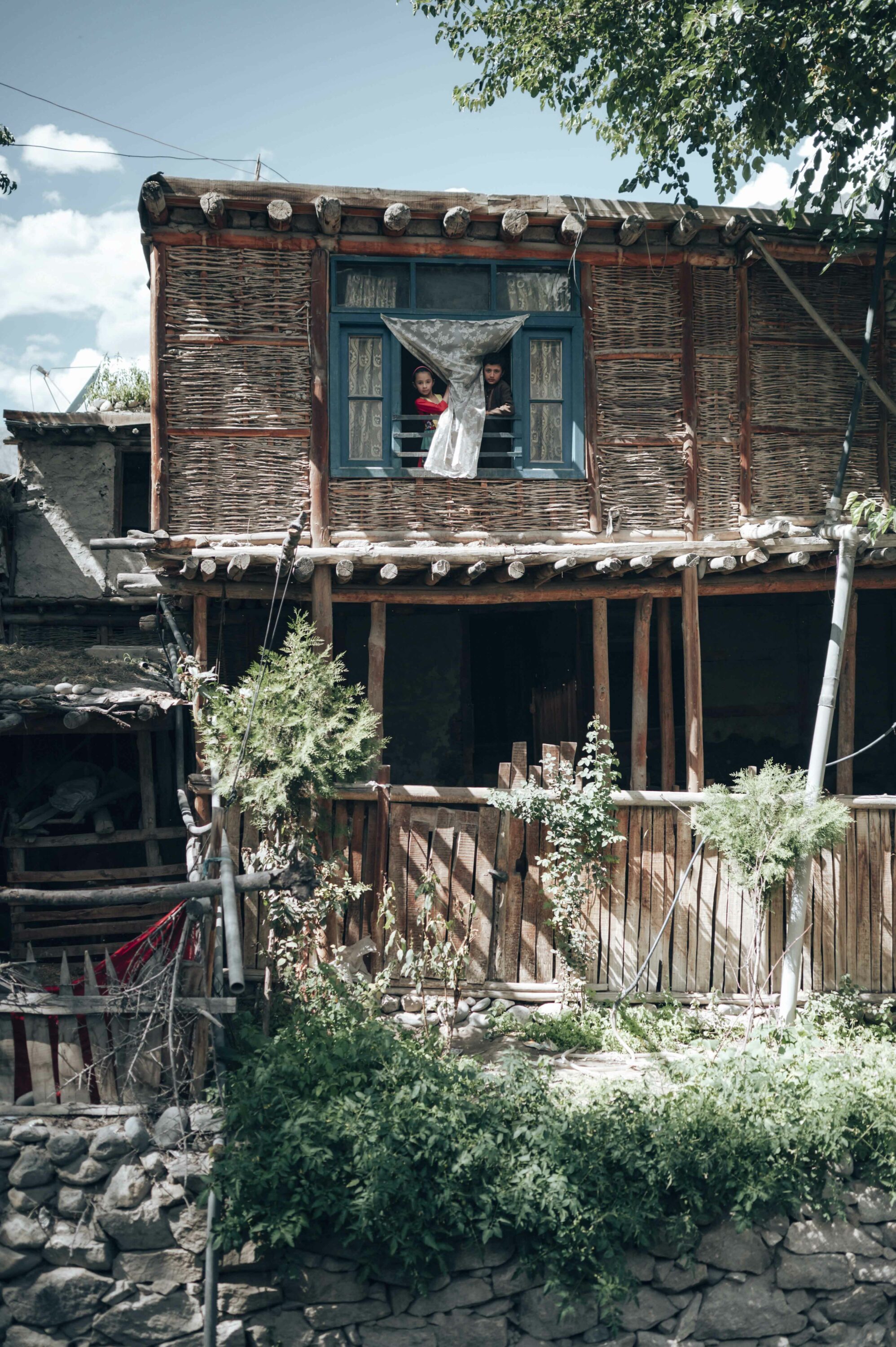
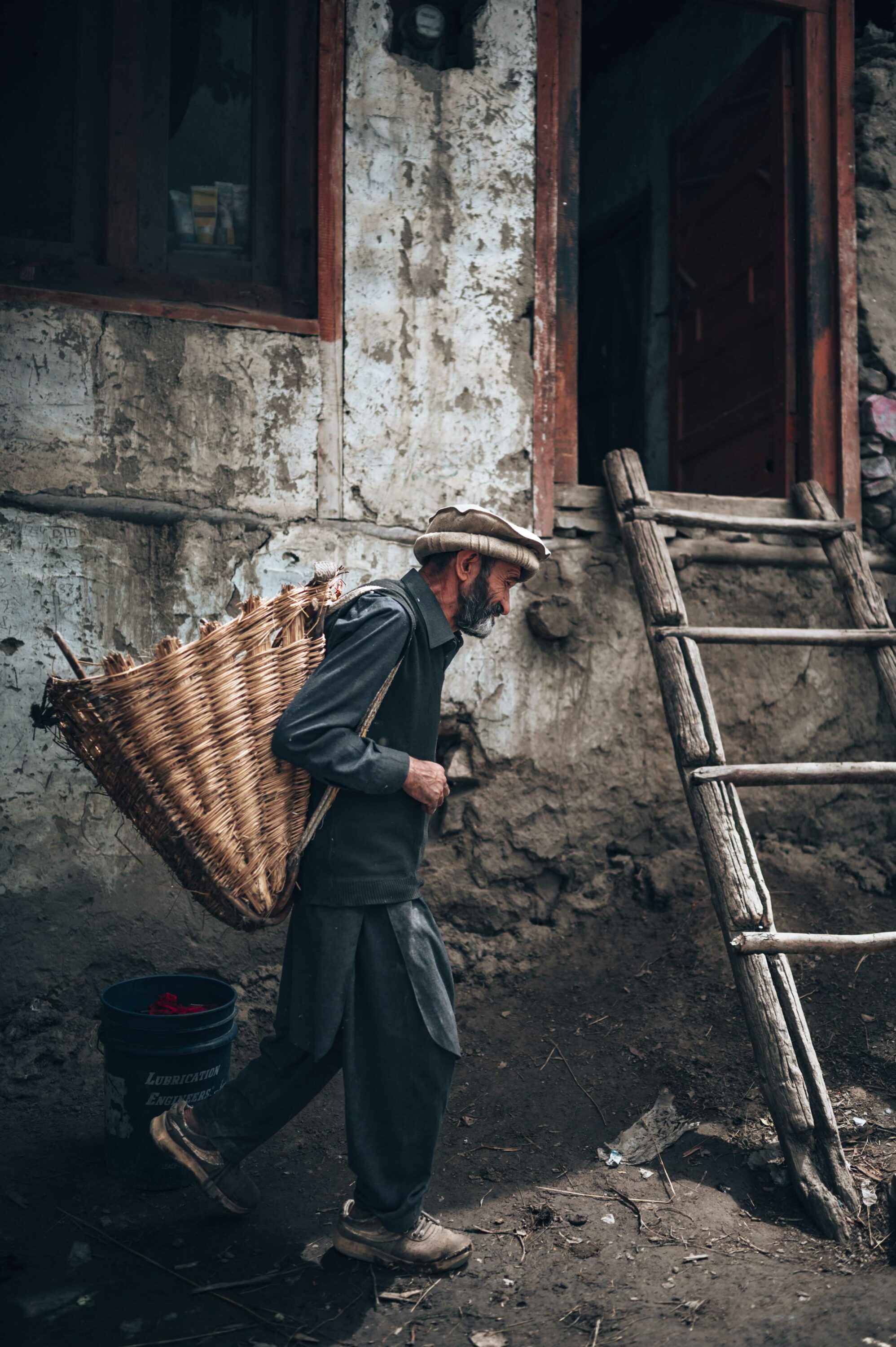
Exploring villages
The next day we’ve got some work to do. Well, they have some work to do (finishing a commercial reel), Yuri also needs to edit and finish a reel and I’m not feeling well. The Pakistani food agrees with me, a lot!!, but the amount of oil they use in a dish doesn’t. And my body is still not itself. It’s been a month of physical ups and downs for me and I can’t handle much. Which is new to me. I used to be able to handle anything, from eating cow eyes to sheep brains and from drinking blood to drinking milk right out of the cow. Well, apparently those times are over. So while everyone is busy on the laptop, I’m busy on the toilet 😉
Anyway, after all work is done we go to Kaphlu and walk around the village. We get to pick apricots, put them in the basket and Rosie carries it to the street. Like the locals do. Mostly done by women btw. While the men sit in their shops and talking about … whatever they talk about, the women are working on the land, carrying for their children and doing the chores in the household. Doesn’t sound like an equal devision of tasks to me and as always that bothers me. It also bothers me that I can’t photograph the hardworking women. Again it’s the men who don’t want the women being photographed. “If we are photographed and our husbands find out they can throw us out of the house” one of the women tells me. Inside I get angry… if men would stop oppressing others and instead help the women with the hard work it would be a much better world. The men are always in charge and see where that has led the world? And I know it’s easy for me to write as I grew up in a country where women aren’t oppressed anymore and are almost as equal as men. Yes, almost, because even in The Netherlands women often earn less than men, some men still think they can touch a women without consent, some men still use their power to make women obey them. The inequality between gender is everywhere but that doesn’t mean we should just ignore it and let it be right? I believe in a world of the free. Where everyone can dress how they want, marry who they want and decide for themselves if they want to be photographed or not. And even though we’re far from a free world it’s my duty to fight for it.
But, that aside. The village is nice, we meet kind people and have a good hike. It’s not as beautiful or interesting as Bhara but definitely fun to walk through. After our small stroll we move up the mountain and find ourself a camping spot with a beautiful view. I’m feeling worse and worse until the only thing I can do is lie down so that’s what I do. I lie down and fall asleep. In the morning I feel even worse. I can’t even sit up straight. Huge headache (quite used to that though), painful stomach and no energy at all. It’s like a sponsh being UITWRINGEN, although I try to drink water I can’t drink much. And the thought of food makes me sick. So that’s my day.
We get back to Skardu, stay in the desert where I fall asleep from 8pm to the morning. The next day I feel a bit better but I have no energy left. Adeel, Rosie and Talhaa also came to the desert and together we go to another valley. This time we explore Chundah valley. A beautiful valley above Skardu. We stay at this magnificent place surrounded by green mountains, little streams of ice cold water and a pond of the same temperature. While I already turn into a block of ice after dipping one toe in the water, the village boys show me how courage really looks like and one after another they jump in the water. They get out freezing, of course.
Again we walk through the village but as soon as some locals tell us girls to cover our hair we decide it’s enough. Still, I got to talk to a local who was working on getting the apricot pit out of the apricot. From the pit they make oil (the one I now have on my somewhat sunburned face) and the apricot skin they drie in the sun for a delicious snack. The man shows me how to do it. Some of the pits you can eat, not this one he tells me. And I write telling but we don’t speak each other’s language, however, we understand each other. It sometimes feels I just make sounds and some awkward body movements to make myself understand. Often that actually works 😁
Anyway, that brings us to right here right now. In Deosai National Park, where we are now enjoying the amazing sunset on a plain which we only share with some golden marmots and hopefully some bears and who knows; a snow leopard?
There are lots of wild animals in this National park. From wolves to bears and from snow leopards to Ibex. Even some very special goats and of course the golden marmots who are so curious that they come quite close. Dark clouds surround us and the sun is nothing more than a light in the far distance. It’s getting cold and we can finally wear our winter clothes again. This is what we craved for after months of scorching Iranian heat. I’m still not recovered so I guess it’ll be an early night under our thick blankets while the stars shine behind the clouds. We lost Adeel, Rosie and Taheel somewhere so hopefully we find them later today or tomorrow 🤣
Love, Milene & Yuri
Check our latest blogs
The way to Fairy Meadows
Nomads & Bears
Exploring one of the highest plains of the world including the nomads that roam these lands.
Bunch of Creatives
Our group is expanding. From travelling with the two of us to exploring with five. A bunch of creatives on tour.
